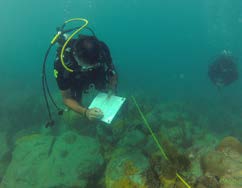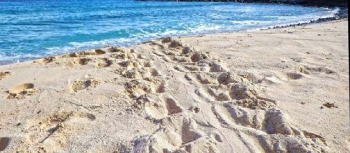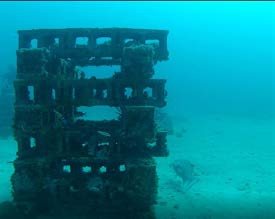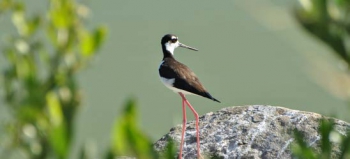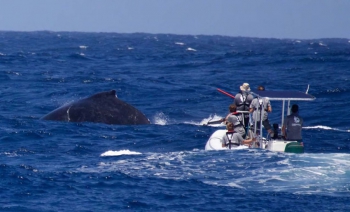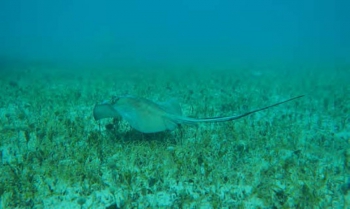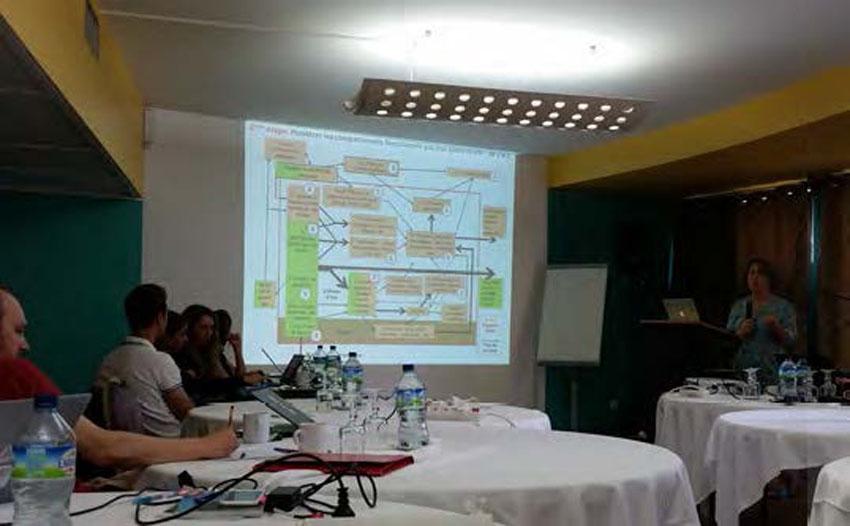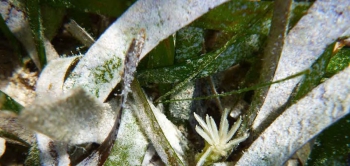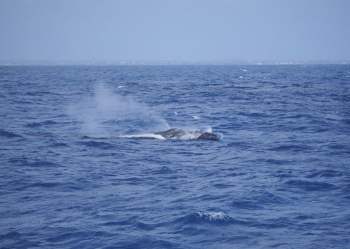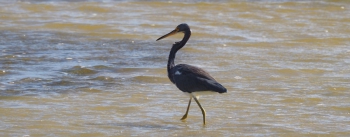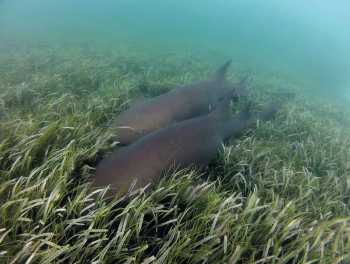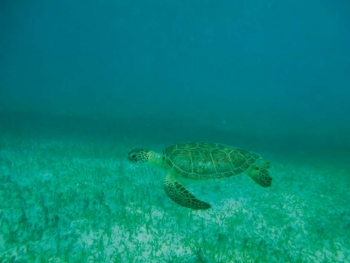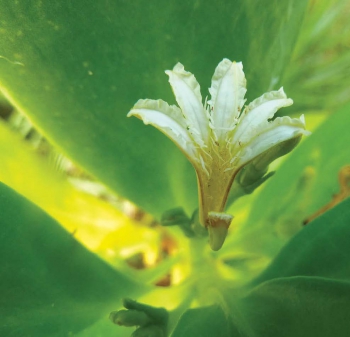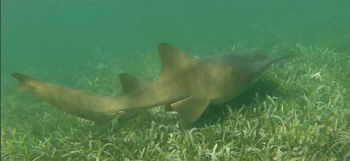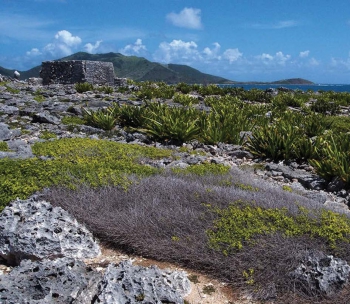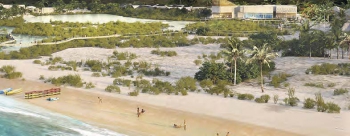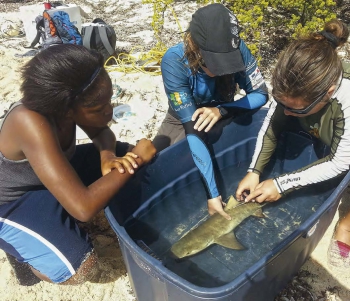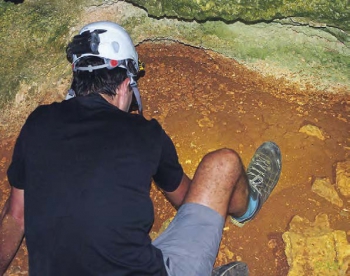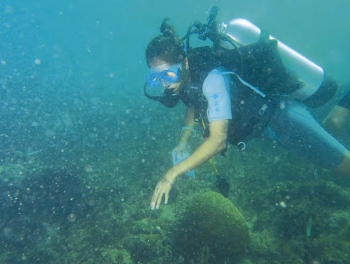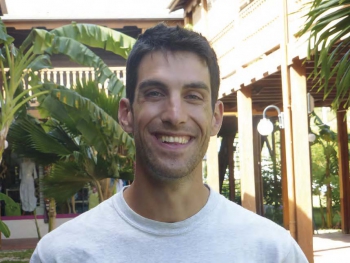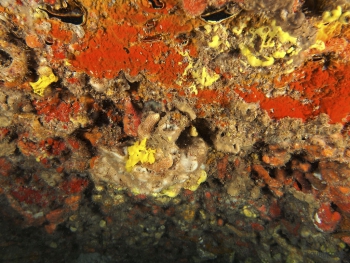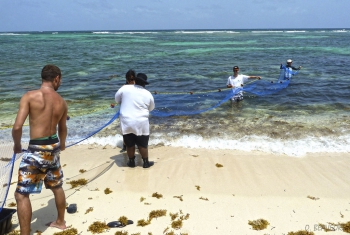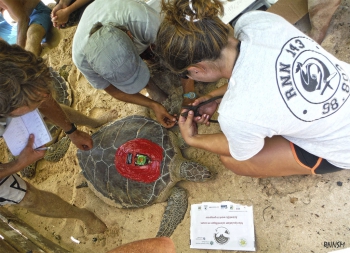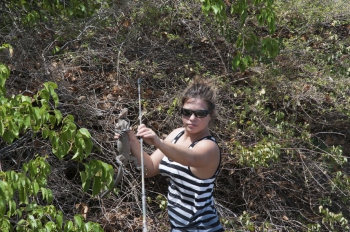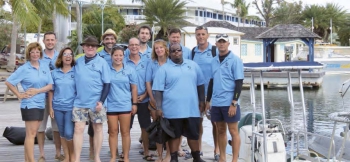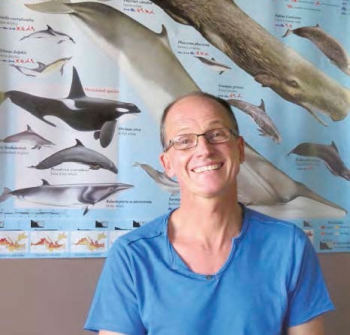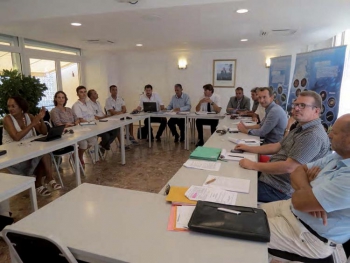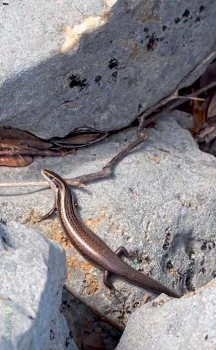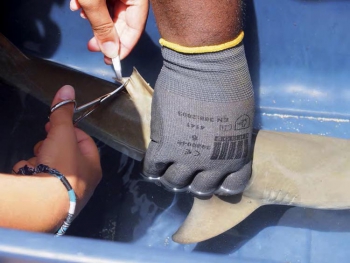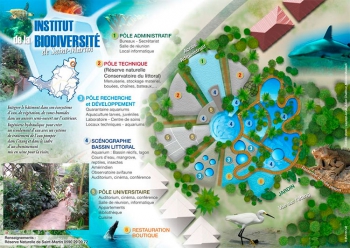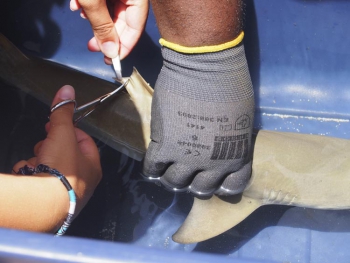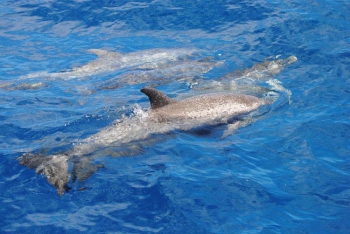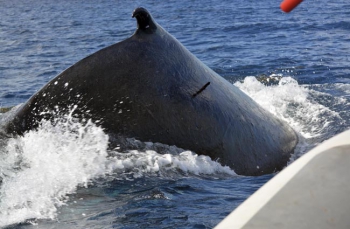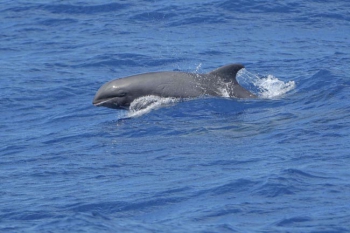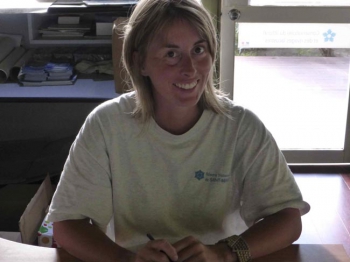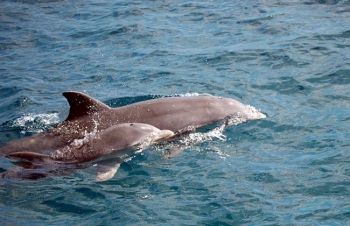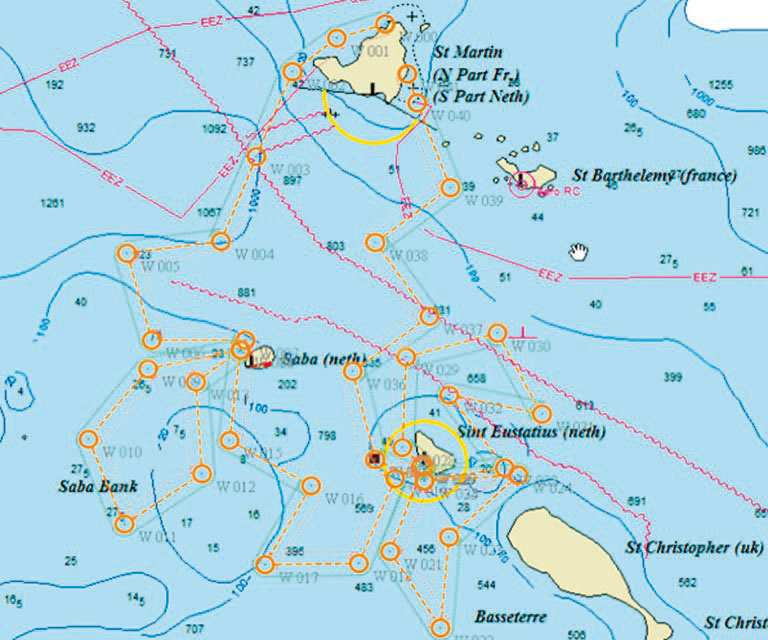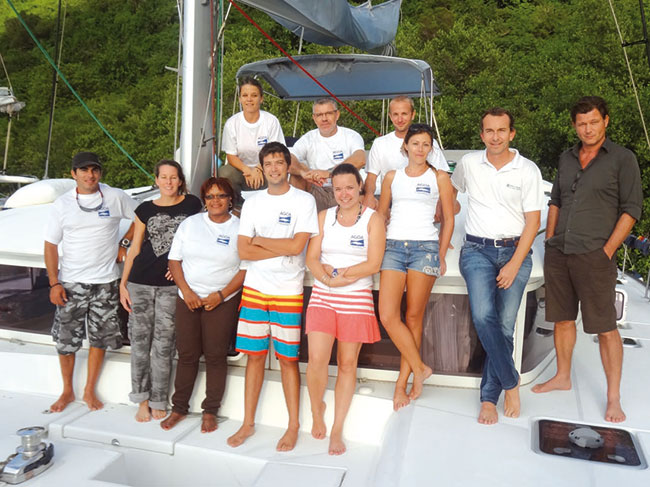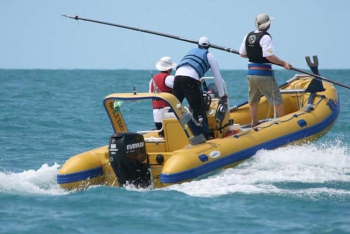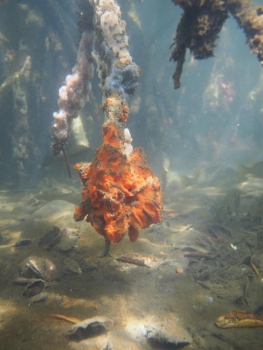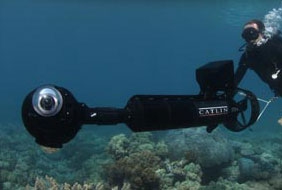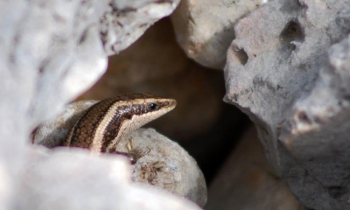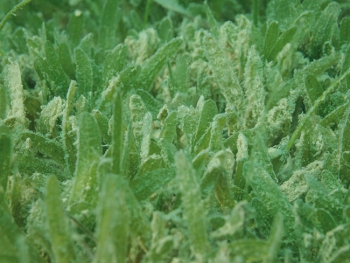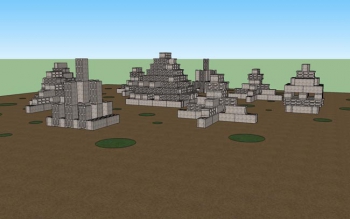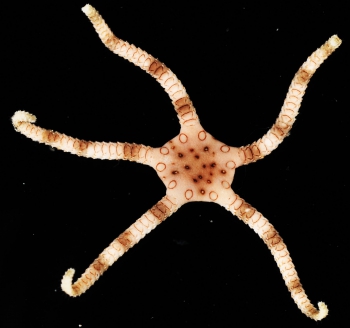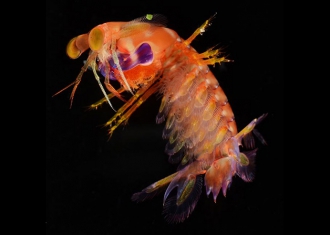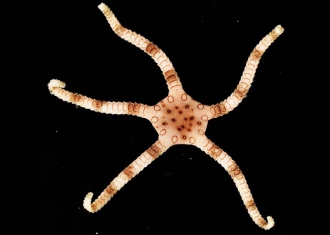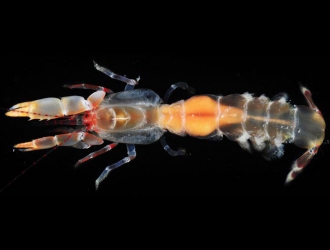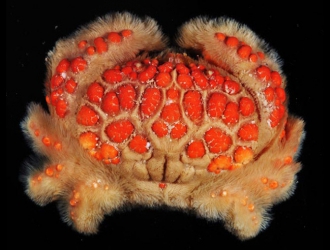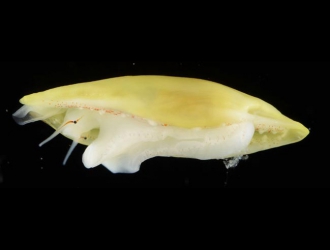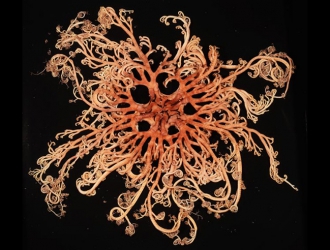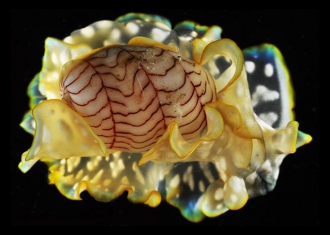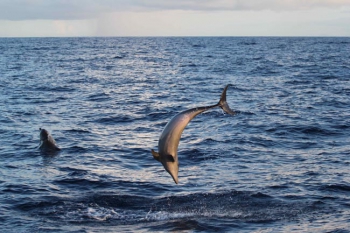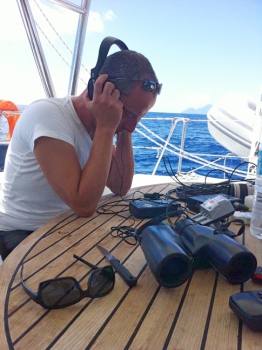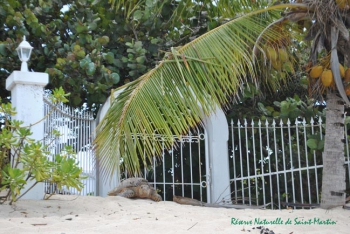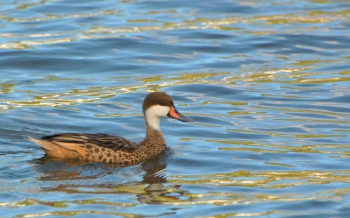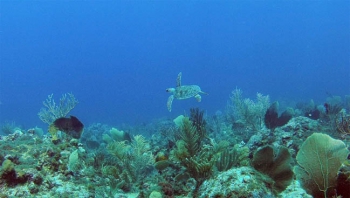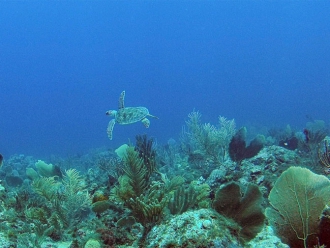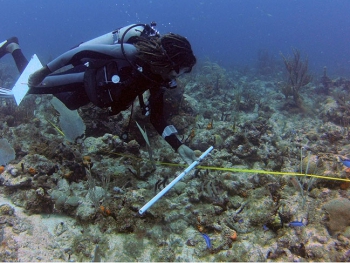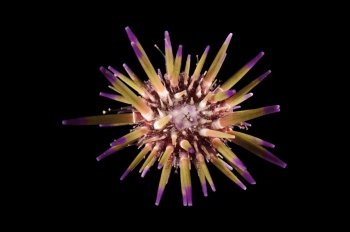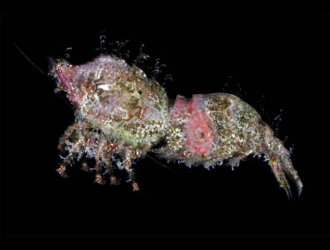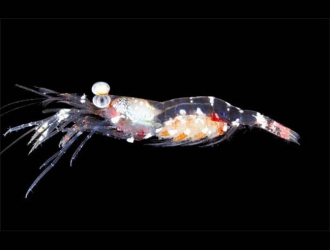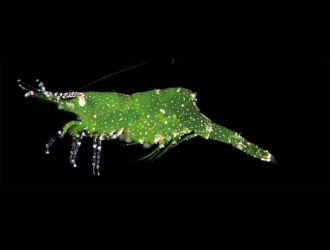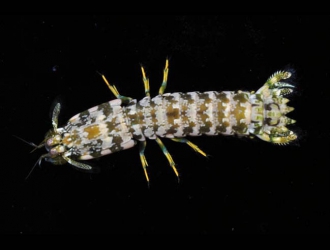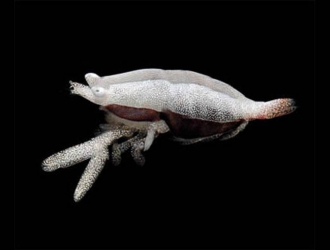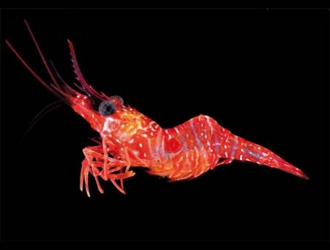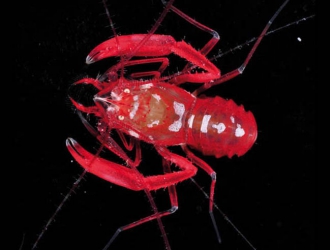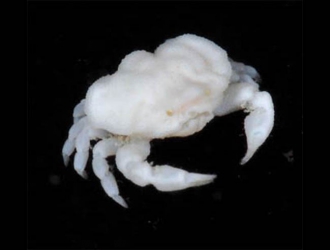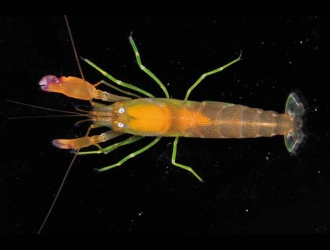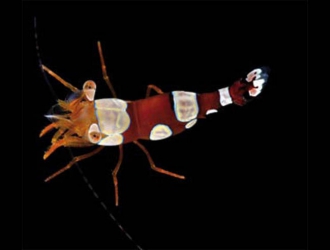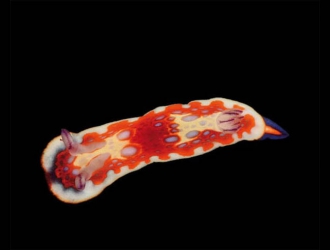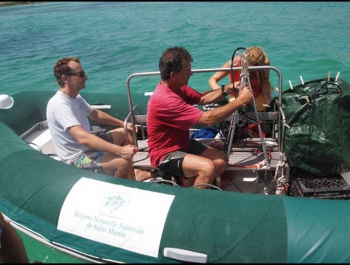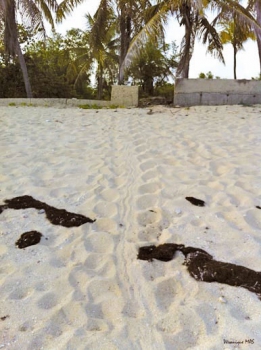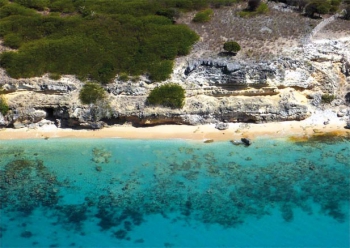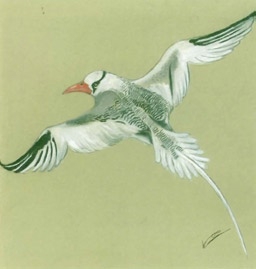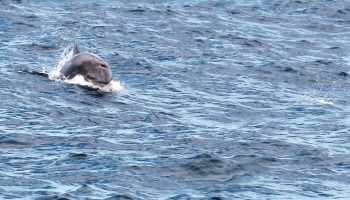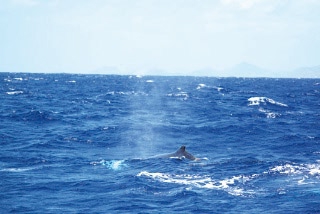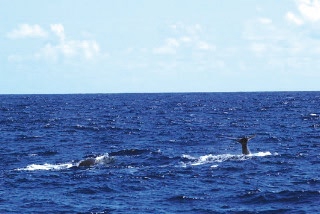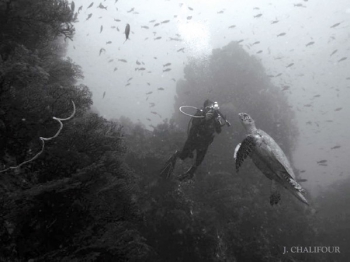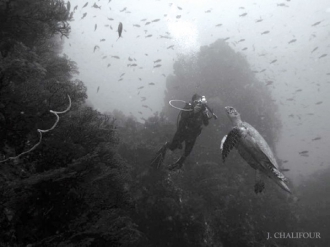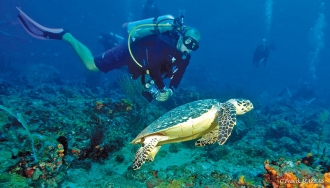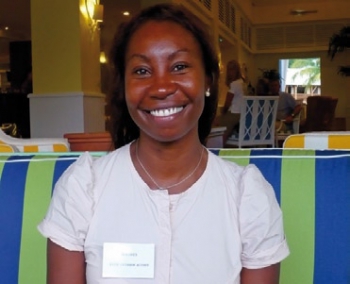Every year, Europe asks its member to suggest projects that can be supported by LIFE, a financial instrument to fund initiatives that are positive for nature, the environment, and the climate. Since the summer of 2022, the scientific department of the Réserve has participated in video conferences—most notably with the National Forestry Office (ONF) and the Herpetological Society of France (SHF), as well as other partners on other islands— whose goal is to present a proposition to the LIFE program for the protection of protected land lizards in the French West Indies. These reptiles include the skink, the grass snake, the iguana delicatissima, the anole, the gecko... The idea is to contribute to the conservation of these populations by creating actions for increasing knowledge, management, and regulation of invasive exotic species, as well as creating public awareness for those who disregard and underestimate the value of our natural heritage. The LIFE funds provide a unique opportunity, without which such major and decisive actions for nature conservation would not be possible on the territorial level.
Better Knowledge About Protected Areas And Protected Species
Better Knowledge About Protected Areas And Protected Species
Better Knowledge About Protected Areas And Protected Species
The autonomous acoustic recorder installed in the waters of the Réserve Naturelle in December 2016 by three American researchers from the National Oceanic and Atmospheric Administration (NOAA) and a researcher from the University of Florida, has exceeded the expectations of these scientists. This acoustic instrument deployed at a depth of 16 meters recorded one hour every four hours over 137 days and the recordings reveal the presence of whales singing on 123 of the 137 days in question. Their songs were recorded over the entire period, from the first to the last day, signifying that the presence of these marine mammals was longer than the period of the study. The recordings from late June are the latest ones in the year for all the areas studied. The data also revealed the presence of dolphins. The four scientists were working as part of a project to study humpback whales and other marine mammals called CHAMP, or Caribbean Humpback Acoustic Monitoring Program. Additional results and studies are forthcoming.
On December 4-6, 2017, the diagnostic Reef Check took place as it has every year since April 2008. This 10th edition focused on the historic site of Galion, as well as three other sites studied over the past three years: Caye Verte, Pinel, and Rocher Créole. The data collected has not yet been analyzed but little impact was noted in terms of the fauna and fixed flora (coral, gorgons, sponges...). Mobile fauna – fish and crustaceans – seems to be been disturbed and modified, but only the results of the data will determine their exact state. A minor presence of post-Irma debris was observed at the four underwater sites, especially at Rocher Créole where it is necessary to remove masts, booms, and ropes. A worldwide effort, Reef Check helps contribute to the global evaluation of coral reefs, The data is transmitted to Reef Check France and added to the Reef Check International database. As in past years, the data will be made available in an online report on the website for the Réserve Naturelle.
The 50 or so eco-volunteers dedicated to reporting the egg-laying activities of sea turtles continued in 2017 with 315 patrols on the 11 beaches surveyed by the Réserve. They found 131 traces, of which 96 were reported in less than 24 hours. Green turtles left 94 of these traces, and the other 36 were by hawksbill turtles. A third of these traces resulted in the laying of eggs. Other traces were reported on the island, outside of the 11 beaches covered by the eco-volunteers, most notably eight traces of leatherback turtles, six of which were at Orient Bay. Two emergences of leatherback turtles were observed in 2017, one at Orient Bay and the other close to La Samanna, at Long Bay. Irma naturally had a major impact of the follow-up of the eggs, which stopped short on September 6 as the daily life of the eco-volunteers suddenly became much more complicated. For the first time since it was launched in 2009, the project was cut short by three months. The egg-laying season in 2018 will be interesting to follow and the Réserve will once again call upon the generosity of volunteers.
Only 20 cinder blocks are left of the 300 used by the Réserve to build the nine structures of the BioHab artificial reefs implanted off the coast of Petites Cayes after hurricane Irma! What happened to the other 280 blocks of concrete? Additional investigations will take place once the sea is calm and clear, but for Julien Chalifour, scientific director, this phenomenon is hard to understand. Near Pinel, on the other hand, the artificial reef less exposed to large swells, was impacted but held fast against the elements, in spite of the shallow depth at which it is implanted.
Since November, the turbidity of the water filled with sediment, and strong swells have made it difficult to dive, so that the Réserve still has numerous sites left to evaluate post Irma. However, the hurricane badly damaged two sites identified a few years ago for their interesting density of Elkhorn coral (Acropora palmata) and Staghorn coral (Acropora cervicornis). The majority of the branches of the coral were broken and all that remains are the stumps of these colonies, while a multitude of coral fragments are strewn on the ocean floor. These two sites –North Cove Bay on Tintamare and the rocky point located to the south of Orient Bay– represented a refuge for these two species of branched coral due to the cool temperature of the water, which is regularly freshened by the movement of the waves.
Where did the birds go? The Réserve Naturelle asked itself this question the very day after Irma hit, and there really isn’t an answer. The scientific study led by Caroline Fleury and Ashley Daniel in November and December proved that there are approximately one third as many birds present as there have been at this time in previous years. Example: between 164 and 372 black-neck stilts were counted every month in 2016, and only 65 of these birds were seen in November 2017 and only nine in December. As for Anatidae, or waterfowl including the Bahama pintail duck, 102 individuals of this species were noted in December 2016 and only 43 at the same time last year. The extremely high water level, especially in the Guichard pond, explains the scarcity of small wading birds, such as sandpipers and plovers. The Guichard pond did however provide a moment of consolation to the staff of the Réserve, thanks to the presence on the same day in December of three rather rare species: a shoveler duck, a pair of northern pintail ducks, and three black-headed diving ducks.
The goal of Megara is to increase our knowledge about humpback whales, from every angle. The third Megara mission took place this year, on March 13-18, as the Réserve Naturelle de Saint-Marin coordinated Megara with the association, Megaptera, whose president is Michel Vély, along with the Territorial Environmental Agency of Saint Barthélemy, the association “My School, My Whale,” and the support of the government of Anguilla, which helped facilitate the authorization required for exploration within its territorial waters. During the five days of the mission, a team of 15 participants used a catamaran as their base camp in the waters of Saint Martin, Anguilla, and Saint Barth. Results: 25 underwater listening tests, 60% of which were positive, and nine visual observations, which allowed for the localization of 33 bottlenose dolphins and 18 humpback whales. In state of rough seas, the team aboard a semi-rigid dinghy were able to successfully place a satellite beacon —which unfortunately remains silent— and taking two samples of skin which were carefully kept in the freezer while waiting to be sent to University of Groningen, which has a database of over 8,500 biopsies of humpback whales in the Atlantic. The multiplication of Megara missions increases this data, as well as observations, photographs, and DNA samples, which are fairly limited in the French West Indies. But the first results indicate that “our” whales are from the same population observed in the waters near Cape Verde. Anyone who is interested can follow this adventure thanks to the videographer aboard the boat!
Share common experiences. Learn what is being done elsewhere. Harmonize methods and identify indicators. This was the scientific approach adopted on April 4-10, 2017 in Martinique, during an atelier organized by IFRECOR and the services in charge of the application of the European Parliament Water Directive on the subject of coral reefs and marine plant beds and nurseries. The goal was to better understand these fragile ecosystems in order to better protect them. Julien Chalifour, director of the scientific department of the Réserve Naturelle de Saint-Martin, exchanged views with his peers from the French Caribbean, the Indian Ocean, and even the Pacific, as New Caledonia was present, as well as representatives of the Global Coral Reef Monitoring Network (GCRMN), IFRECOR, the Ministry of the Environment, various governmental services, and the consulting firm present to represent France. The idea is to standardize the protocols used to collect information, centralize all data, and allow for a better understanding on the part of the government as to the general health of the reefs and plant beds on various levels.
Fanny Kerninon, interlocutor for IFRECOR for a study on the health of overseas plant beds, has started a thesis whose goal is to create a scientific toolbox to study plant beds. She competed her first mission for this thesis in Saint Martin, where, in concert with agents from the Réserve, she tested her protocol at three stations: the lagoon in Tintamare, Galion Bay close to the Etang aux Poissons, and Rocher Créole, an existing station where the Réserve Naturelle began a scientific study in 2009. Three dives at each station permitted the observation of several parameters in a 50 meter-long corridor: the number of plants and the eventual presence of flowers, algae, or various species of animals. Samples of water and sediment were also collected. Kerninon plans to assemble all of the information available and to test the standard protocol, which she is helping to improve.
The third MEGARA scientific mission took place on March 13-17, 2017, and included placing an Argos beacon in the fatty tissue of one humpback whale and taking skin samples from two such whales. In contrast to the beacons placed in 2014, this most recent one does not emit anything for the moment.
The skin samples will allow scientists to determine the origin of each of these individuals. The samples will be compared by Dr Palsboll at the University of Groningen in The Netherlands, using a database of 8,500 samples taken from whales in the Northern Atlantic, while prior results lead to the supposition that the whales in Saint Martin belong to a group also found off the coast of Cape Verde. Strong swells generated by the wind made the navigational conditions difficult for this mission, but all the same, allowed for the observation of at least 10 humpback whales, including two calves. These observations were made from aboard a catamaran, used as base camp, with closer approaches made in the semi-rigid dinghy of the Réserve Naturelle, primarily around Tintamare and Anguilla. Underwater listening via hydrophone provided interesting acoustical information, confirming that the humpback whales are not only migrating through the waters of the Northern Islands, but also come here to reproduce, as indicated by the songs of the males. The Réserve Naturelle organized this mission with technical support from the association, Megaptera, and the participation of Olivier Raynaud and Claire Delubria from the Territorial Environmental Agency of Saint Barthélemy. Michel Vély, president of Megaptera, is very pleased to now be based in Saint Martin. «This proximity will allow us to develop projects dedicated to additional species of marine mammals throughout the year, improve our overall knowledge, and give the public the possibility to learn more about these animals,” he says, pointing out that he is especially looking forward to working in synergy with the association «Mon école, ma baleine» (My School, My Whale), which can organize student field trips at sea. Good news: The Réserve is organizing a conference in the near future at which the public can see a very good 33-minute film directed by Jérôme Grenèche during the 2014 Megara mission in the Northern Islands
Deep in the seas of the Réserve Naturelle, 15 meters below the surface, a microphone records all of the sounds heard underwater.
And there are lots of them. Natural sounds coming from shrimp, fish, or marine mammals — the primary species concerned by this experience — but also any sound pollution created by humans, such as the noise of motors or that of seismic prospecting. The sound-recording device is programmed to start every four hours, and capture all the decibels it hears over the next hour. Three American researchers from the National Oceanic and Atmospheric Administration (NOAA) and a researcher from the University of Florida , who has set up similar projects on the other French Caribbean islands, installed the microphone in December 2016. These four scientists are working on CHAMP — Caribbean Humpback Acoustic Monitoring Program — a study of humpback whales and other marine mammals. Once the recording devices are collected, an analysis of their data provides information about the species of marine mammals that are heard in relation to the frequency and signature of the sounds. As for the humpback whales, it will eventually be possible to distinguish the number of individual “singers”, as each one has a personal voice in the midst of a common refrain, which itself changes every year.
1250 birds — 340 of which were black-necked stilts — were sighted in just two mornings in April 2016 at nine of the salt ponds on the island.
This data was collected during the annual campaign to study the ponds and the birds that visit them, as run by Caroline Fleury and Ashley Daniel. A large number of these birds migrate in the autumn and come south from North America, and head back in the spring to more northern latitudes, certain of which are 6,000 kilometers from Saint Martin. Forty species of shore birds — those small waders that dig their beaks in the silt of the ponds to find their food — were observed, as well as the Bahama pintail, the only member of the duck family to live on the island year-round, in contrast to the four other species present only in the winter : the blue-winged teal, the Eurasian teal, the ruddy duck, and the ring-necked duck. The scientific study of these birds revealed a few unexpected surprises, including the observation of rare species, such as an American duck, a Wilson’s snipe, a ruff, and a hooded merganser. The lives of these birds are closely tied to that of the ponds, which are closely observed by the Réserve Naturelle. Photos taken at regular intervals show all kinds of changes : cutting of vegetation, landfill, the height and color of the water, while the level meters installed at the Etang de Chevrise, the Etang Guichard, the Etang de Grand-Case, and the Mare Lucas in Oyster Pond, also register changes in the height of the water.
The protection of the nests and eggs belonging to these birds is of essential importance, but children are often unaware of this and amuse themselves by breaking eggs found near the Etang de la Barrière. Result: only two baby birds were observed during the hatching period on this pond. Please note: the walking of domestic animals is forbidden in these wetlands, which are an officially protected biotope, with the goal of preserving the tranquility of popular reproduction areas for the island’s birdlife.
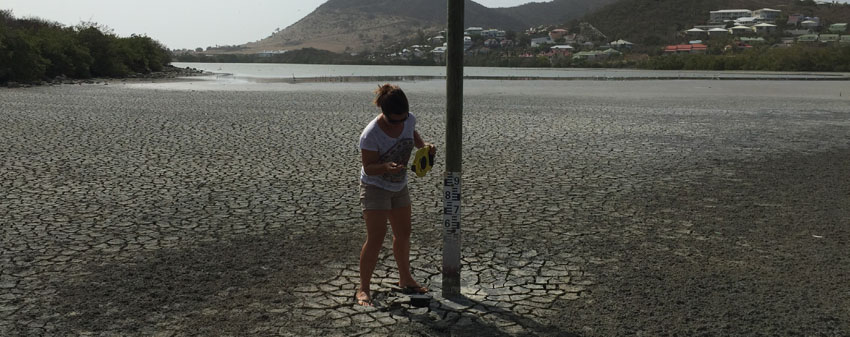
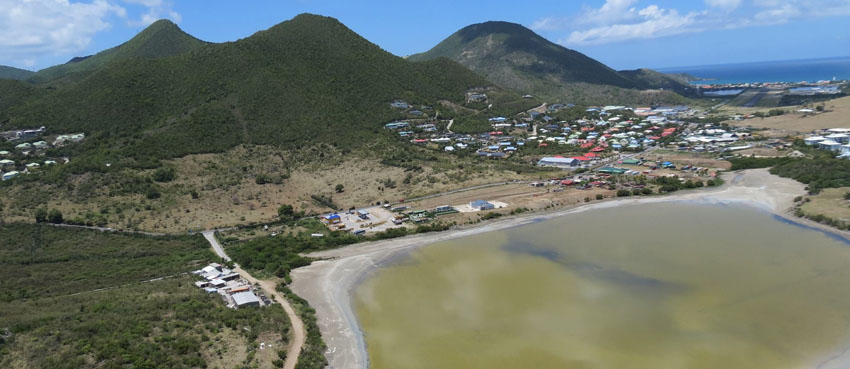
Why do female nurse sharks gather in large groups every summer, especially at Galion, but also at Caye Verte, or in Baie Blanche at Tintamare?
A university student in the Sea and Littoral Technician program at the Université du Littoral Côte d’Opale in Calais, and an intern for the French Antilles Shark Network, which is coordinated by the association Kap Natirel, Nicolas Boudin spent four months with the Réserve Naturelle studying this question. Thanks to placement of underwater cameras, he was able to determine that just the pregnant females were present at the sites that were selected to study. The fact that these sites all share the attribute of warm water, not too deep, might play a role in the progression of the shark’s gestation period. Why? The question remains to be answered. We simply know that the female nurse sharks, ovoviviparous, expulse their young and immediately move away from them, to avoid devouring them. The females generally adopt a protective behavior for their young by liberating them in zones not frequented by other adult sharks, and by ceasing their feeding for a short time.
Depuis 2007, la Réserve naturelle poursuit son suivi scientifique annuel des récifs et herbiers, qui s’est déroulé du 4 au 6 octobre 2016. Un garde de la réserve naturelle de Petite-Terre et un autre de la réserve marine de Saint-Barth étaient présents, afin d’aider l’équipe de Saint- Martin à collecter les données sous l’eau, sur les sites du Rocher Créole, de Pinel et de Tintamare et, hors de la Réserve, sur le site de Fish Pot, dans le canal d’Anguilla. Les données sont en cours de traitement. Dans le cadre de ce compagnonnage sous-marin entre réserves, Steeve Ruillet est allé prêté main-forte à Petite-Terre du 19 au 21 septembre et Julien Chalifour à Saint- Barth du 26 au 28 septembre. Le suivi scientifique des fonds marins de la Réserve naturelle a pour objectif de documenter l’évolution de leur état (communautés coralliennes et d’herbiers).
Already damaged by the use of anchors, the food pantry for our favorite green sea turtles has in the past few years also been invaded by a new species that is the object of tight surveillance.
Three American scientists, including Doctor Jeremy Kizska, were in Saint Martin on November 6-12 to observe the interaction between these turtles, which feed on the underwater plant beds, and Halophila stipulacea, a kind of sea grass. This invasive species was introduced via boat anchors and water from ballasts, and little-by-little takes up more-and-more space in the underwater herbier, where it is in competition with Syringodium and Thalassia, the two native species. From the International University of Florida, the scientists were hosted by the Réserve Naturelle, which had done a study on the same species in 2014. The three academics planned their project to span two years, and will soon return to our island. Their research is to estimate the density of the green sea turtle population, and study their feeding behavior in targeted zones. To be precise: comment do the turtles react when faced with this new species? The idea is to equip certain turtles with a GPS and use underwater cameras to see what they select as food, if they go for the new species or if they simply munch on what is easily within their reach. The scientists had to wait for authorization from the DEAL in order to take various samples from the turtles in order to better understand their nutritional habits thanks to isotopic analysis. At Tintamare, so far they have taken samples of the herbier in order to make a map, and they have counted the number of turtles present at various plant beds at different times of the day.
The Réserve Naturelle hosted Karl Questel,
A ranger at the Territorial Environmental Agency of Saint Barth, on May 16-29. Renowned for his deep knowledge of tropical flora and fauna, Questel lent a hand to Caroline Fleury in her creation of an inventory of the terrestrial flora and fauna the within the Réserve Naturelle de Saint-Martin. During this two-week project, Fleury and Questel identified every species they encountered, whether native, endemic, introduced, or invasive. Each species now has its own information sheet, which comprises its vernacular (common) name, its scientific name (in Latin), its photo, and description. On the Sentier des Froussards, for example, between Anse Marcel and Cul-de-Sac, 211 floral species and 103 animal species share the landscape, including a large number of insects. Endemic species - present naturally on the island - were given special attention, with an eye toward their preservation, as were invasive species, in terms of controlling them, if not eradicating them entirely. For example, one scaevola taccada flowering shrub was found at Pinel and might be uprooted. Called “sea manioc” in La Réunion, this plant comes from the Indo-Pacific region and tends to invade the coasts of Caribbean islands and Florida, where is supplants its endemic cousin, scaevola plumieri. Fleury and Questel spent one night on Tintamare, in order to identify nocturnal species: starting with insects - butterflies, grasshoppers, ants - as well as other species, such as crabs and birds. The Réserve Naturelle covered Karl Questel’s stay in Saint Martin, as part of a partnership program between the two islands.
Nicolas Boudin, a 20 year-old scientific student in the «Sea and Littoral Technician Program” at the University of the Littoral Opal Coast in Calais, is researching why nurse sharks gather in large numbers every summer,
especially near Galion, as well as Green Cay, or White Bay at Tintamare. These mysterious aggregations take place from mid-July through the month of September, and the placement of underwater cameras will certainly allow for increased knowledge about this species. Keeping in mind that man is the primary predator of nurse sharks - and bullhead sharks - that feed on small fish, squid, and crustaceans. As an intern from May 30 through September 28, 2016, Nicolas first set up a follow-up protocol, an indispensable step before working in the field. He is working with the French West Indies Shark Network, coordinated and run by the association, Kap Natirel.
What is the heritage of Saint Martin in terms of historic buildings?
We will soon have a better idea, as soon as the Collectivité makes its inventory on the subject available to the public. Caroline Fleury, working in the scientific sector at the Réserve since February 2015, toured two sites, on Tintamare and Green Cay, with Élisabeth Dandel, an art historian, and Michèle Robin-Clerc, a leading planner and architect, along with Christophe Hénocq, director of pedagogical activities and heritage for the Territorial Archives, and co-coordinator of this project with Stéphanie Dargaud, director of the same service. The two specialists took numerous photos, made sketches, and took the measurements of these two structures, witnesses to the historic past of Saint Martin.
The architectural firm of Véronique Descharrières was selected from a list of three candidates following a competition launched last year for the creation of the Caribbean Institute for Insular Biodiversity.
This firm’s credits include the Paris-Vincennes zoological gardens, a project which comprises the conception of six zones representatives of the various ecosystems on the planet. The pre-project, as proposed and accepted for the biodiversity institute, is interesting for several major reasons including a solid understanding of the investment and operation costs, a concrete structure on stilts - a big plus in a territory subject to the impact of hurricanes and earthquakes - as well as excellent thermal isolation. The overall study for the project will continue throughout 2016, until the building permit is submitted. The goal is to define the details for the future Institute, which will house the various departments of the Réserve - governance, administration, logistics, scientific, a branch of the Conservatoire du Littoral, and a university division. Special attention will be paid to the scenography which will be presented to the public. An aquarium is planned, as well as an auditorium and pavilions dedicated to various land and sea species in a playful, yet pedagogical environment. The Réserve Naturelle will continue to get support from the State of France, until the study is completed, through the terms of the Development Contract.
Both the Réserve Naturelle de Saint-Martin and the Nature Foundation of Sint Maarten are interested in the various species of sharks found close to the island.
As part of the Dutch program «Save our Sharks,» two students doing internships at Nature Foundation, in conjunction with the consulting firm, IMARES, have created an inventory of the species of sharks that frequent the waters around both sides of the island. This mission completed the selection of existing examples with the observation of new species in new zones. On the French side, in collaboration with the Réserve’s scientific office, new species in their juvenile stage were observed, confirming the role of coastal waters as a nursery.
Océane Beaufort completed a fourth mission in Saint Martin on November 16-21, in continued collaboration with the scientific office of the Réserve Naturelle, as part of the Negaprion mission.
This shark specialist had recently returned from Panama, where she participated in a scientific conference organized by the Gulf and Caribbean Fishing Institute, during which a session was dedicated to the scientific study of sharks and rays. In Saint Martin, a tour was made of sites already identified as nurseries for lemon sharks, to especially observe the presence of juvenile sharks in a zone that had previously been observed, as well as the presence of young leopard rays,
Did you know that Saint Martin has more than 20 caves and grottos, five of which are on the island of Tintamare ?
These hidden places are not visited too frequently; a reality that makes the archeologists happy. This means they have a better chance to discover eventual human or animal traces left over the years, and to be able to date successive layers. This is why a team of specialized researchers came to make an inspection of the natural caves and cavities in late February 2016. From Montpellier and Guadeloupe, these academics were not disappointed. They made interesting discoveries and even completed an inventory of existing caves. A report is underway, but mum’s the word! The secret must be kept in order to preserve these mysterious places!
Camille Morin, an intern at the Réserve Naturelle from November 2015 to February 2016, is completing several projects during the year as part of the curriculum from her agronomy engineering school in Bordeaux.
She contributed to treating and confirming data from a scientific study of the state of health of the reefs and herbariums, both in and outside of the Réserve. The document, created in 2008, inventories the presence of marine flora and fauna at specific locations that were studied - coral, sponges, algae, gorgons, sea urchins, fish, mollusks, herbariums - as well as the overall state of their health. This study has been refined over the years, and increased from a total of two to six stations, inside as well as outside the boundaries of the Réserve. The young student also participated in «Reef Check», the annual coral reef survey supported by the Quiksilver Foundation, which provides an international vision on their evolution. There were three new stations as part of this survey - at Caye Verte, on the underwater trail at Pinel, and at Creole Rock — in addition to the first station established in Saint Martin in April 2008 at the Galion surf spot. These sites are of particular interest as they are all managed by the Réserve Naturelle and regularly visited by the public.
Maxence Morel, a Master’s degree student at the University of Corte, studies the integrated management of the littoral and ecosystems.
An intern at the Réserve Naturelle from February through July 2016, he is basing his work on the study of cactus and gaïac trees, under the supervision of Caroline Fleury. His mission is to make a chart of protected species, and also to study the health of the Melocactus intortus (Turk’s Head cactus) at the sites of Cactus Place and Babit Point. This particular cactus has been threatened since 2011 by the Cactoblastis caterpillar and its butterfly. This insect, present in Saint Barthélemy where it has done a great amount of damage, was imported in 1957 to Nevis. Morel looked at three quarters of the cactus on Tintamare and he was able to identify the Opuntia rubescens, a species of protected cactus that had not been known to exist on the small island of Tintamare. Also in Tintamare, especially on the cliffs, but also around North Cove, there are more than 100 gaïac trees, which are only found in Saint Martin in non-developed hilly areas.
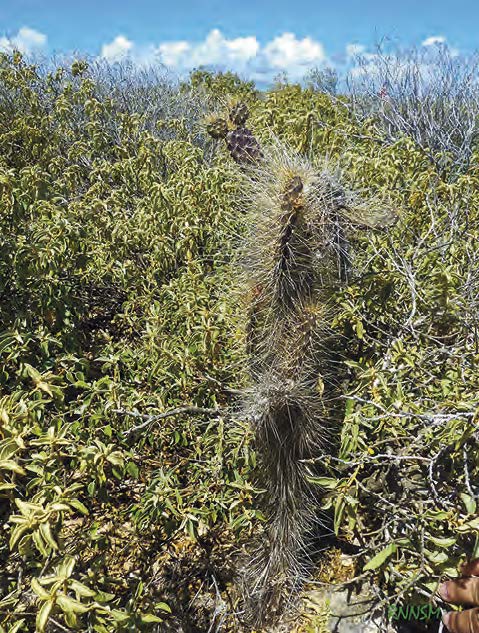
Alerted by a local resident near the bay of Cul-de-Sac, the agents of the Réserve recuperated the cadaver of a green turtle washed up close to the beach.
The animal had numerous tumors, typical of fibropapillomatosis. This herpes virus, originally discovered in the waters of Tahiti, currently affects turtles the world over. The occurrence of this disease, normally not transmissible to humans, underlines the importance of not touching sea turtles, especially to avoid the transmission of the virus from one turtle to another. The Réserve is in charge of the local network for the beaching of sea turtles and marine mammals, and invites anyone who sights such animals to transmit the information to 06 90 34 77 10 or science@rnsm.org.
The Pacotilles project, whose goal was to collect samples of coral, sponges, algae, and small crustaceans throughout the French Antilles archipelago - including Saint Martin - in order to deepen our knowledge about the underwater biodiversity in that zone, took place in two phases. Phase two, held on May 26 and 27, included participation by scientists primarily interested in sponges, which make up the majority of the Caribbean reefs, as compared to the reefs in the Pacific and Indian Oceans, which are primary coral. A tasty item on the menu for hawkbill turtles and angelfish, some of these sponges tend to develop in darkness, or crevices of the reef, where they are less exposed to predators. To their surprise, the scientists noted that Saint Martin lacks certain species of sponges that are very abundant in Guadeloupe, and on the contrary, has an abundance of calcareous sponges of a larger size than those found in Guadeloupe or Martinique. These researchers did surveys, took photos and collected samples, hoping that their analysis will help explain these differences and maybe reveal the presence of as yet unknown species of sponges, which number in the thousands. The Réserve Naturelle— which replied favorably to the request for authorization for diving and taking samples by the Pacotilles team—will be kept abreast of the results, which will eventually lead to additional protection in certain zones colonized. by these species.
The third session of the Negara program - as in Negaprion, the scientific name for the lemon shark - took place from May 18-23, 2015, once again under the leadership of Oceane Beaufort, an expert in this large cartilaginous fish currently seen in their juvenile stage along the island’s beaches, where they come into more frequent contact with swimmers. A team from the Réserve Naturelle and this young scientist turned their attention to the lagoon south of the small island of Tintamare, where they tested a fishnet acquired by the Réserve Naturelle, in the hopes of capturing a lemon shark without hurting it. This technique is less aggressive than fishing with a hook, but is sometimes difficult to succeed in a rocky zone or where there is a lot of sargassum seaweed. Only one shark was caught and was marked twice: once on its fin and with a chip under its skin. The absence of juvenile lemon sharks marked at this site in 2014 remains a mystery. Did they migrate? Were they victims of hurricane Gonzalo or of a predator? The interest in marking the sharks lies in the hope of getting answers to the many questions that we have about this little-know species.
Four green turtles were captured in Bay Blanche at Tintamare - then released - as part of the SeaTag operation on June 14-16, 2015 The goal of this project, financed by Europe, the Region of Guadeloupe, DEAL, Biome funds, and the EDF Foundation, is to increase knowledge about the green turtles in the Guadeloupe archipelago. Éric Delcroix, in charge of this project for the Réserve Naturelle of Petite-Terre, participated along with Antoine Chabrolle, who is responsible for marine turtles at the ONCFS, as well as Océane Beaufort and Caroline Cestor-Magro, from the association Kap Natirel. The four green turtles in question were captured near their feeding grounds and were not in a reproductive phase. They were measured and banded, while two of them were equipped with sophisticated Argos tags. This allows the turtles to be followed by satellite, recording not only their movement and the zones they visit, but also the number of dives they make, plus the length and depth of the dives. This information is permanently available online at seaturtle.org, by entering the name of the animal in the field «animal finder.» The scientific office at the Réserve Naturelle is interested in any and all photos of Sasha and Joe – easily recognizable thanks to their red beacons. Please send photos to science@rnsm.org. Please make sure not to harass these turtles and especially do not damage the beacon and its antenna attached to their backs, so that they can continue to teach us about their daily habits over the next seven months.
Caroline Fleury, who has been working in the scientific department of the Réserve since February 2015, focused on La Désirade from June 6-10, 2015, in time for the annual study of the population of Lesser Antilles iguana (Iguana delicatissima). This experience allowed her to familiarize herself with the capture, manipulation, and marking of this endangered species. The project was coordinated by the association, Le Gaïac, and financed by the French National Office for Hunting and Wildlife (ONCFS), in regard to everything that concerns this reptile in the French Antilles.
After having initiated the first Megara mission to study humpback whales in the waters around Saint Martin and neighboring islands in March 2014, the Réserve Naturelle launched Megara 2015 on March 23, 2015, for 12 days dedicated to the observation and research of humpback whales. This study of marine mammals instituted by the Réserve, and more specifically the Megara missions in the Northern Islands, has proved that humpback whales are not simply migrating past our islands. The songs of the males, the observation of groups of males following females, and the presence of females with their babies just a few days old, indicate that this marine zone could also be an area for reproduction as well as a nursery for these large mammals. The best surprise during this expedition was the diversity and large number of songs by male whales that were recorded by the Megara crew, as the best singers try to win the hearts of those females with which they want to mate. «Every year, the songs are new, and this season they are relatively different from those that we recorded in 2014,» remarks Julien Chalifour, director of the scientific division of the Réserve. «If they come from the same place, the whales will adopt the same style of songs, and the songs apparently evolve as different groups come together,” he continues, noting that among the humpback whales, the male that is number one on the hit parade has the best chances at reproduction. The 15 participants in Megara 2015, in addition to the Réserve staff, included Michel Vély, a marine mammal specialist who is the president of the association, Megaptera, which develops various programs about the study, awareness, and conservation of marine mammals. Also included were two photographers, as well as Olivier Halin, a videographer and drone pilot, who also shot some great aerial images of large dolphins close to the shores of Tintamare. Next comes the sorting out the images, and especially examining those that show the tail fins of humpback whales, whose characteristics signify the individual identity of each mammal. The photos will be entered in the catalogue created last year by the Réserve and shared with other existing catalogues from the Caribbean, as well as the United States, Canada, Iceland, and Norway. The Réserve has promised that the public will soon be able to see the videos, as well as other beautiful images taken during the 2014 and 2015 Megara campaigns. At the same time, three samples of skin were taken to determine the sex and origin of each whale, as well as their nutritional regime, and any eventual chemical pollutants that might have gotten into their bodies. These biopsies will be analyzed by Dr. Per J. Palsboll at The University of Groningen in The Netherlands, and compared to a database of thousands of samples taken from animals in the northern Atlantic. This will determine the zones in the Atlantic frequented by these large marine mammals.
Saint Martin and its Réserve Naturelle will be featured in the next book by Renaud Dupuy de la Grandrive, a photographer who specializes in marine and underwater images, and is also the director of the Protected Marine Zone of Cap d’Agde, an eco-tourism zone of 16,000 acres frequented by 250,000 tourists each year, or 10 times the number of local residents. He assisted the Réserve Naturelle during its second Megara mission, during which he took some beautiful photographs. Renaud is the author of two illustrated books, one on Cap d’Agde and the other on the marine milieu in the Mediterranean. His next book has a wider scope, as he will present all of the «hotspots» for marine biodiversity on the entire planet… including our own little rock.
From April 22 through June 1, 2015, Pacotilles set out to collect samples of coral, sponges, algae, and small shellfish in Martinique, Guadeloupe, and Saint Martin. The goal of this inventory is to improve our knowledge of biodiversity and the connectivity of benthos -the community of organisms that live on, in, or near the seabed- in the Lesser Antilles. This project was financed by the Institut de recherche pour le développement (IRD), the CNRS, and the Agency for Protected Marine Zones. Normally prohibited by law, the collection of species for this inventory was authorized by the Réserve Naturelle. They responded favorably to a request made by the directors of Pacotilles, who in return will provide a report about the project and its results.
AGOA: a partnership renewed
Good news for marine mammals. After evaluating the work done over the past two years by the Réserve Naturelle, the Agency for Protected Marine Zones (AAMP), agrees to renew the partnership agreement it signed on behalf of the AGOA sanctuary and the Réserve. Pierre Leca, deputy director of AAMP, who runs their natural marine parks department, made the decision. While visiting our region in April 2015, his goal was to meet with all of the administrative agencies and members of the board of AGOA in Guadeloupe, Martinique, Saint Barthélemy, and Saint Martin. Accompanied by François Colas, chef of the Antilles branch of AAMP, and Amandine Aynaudi, representative of AGOA, he met with various people on our island including vice president Ramona Connor at the Collectivité, prefect Philippe Chopin, and deputy Daniel Gibbs. The meeting at the Réserve Naturelle focused on the most recent management board meeting for AGOA, which was held May 21, 2015 in Martinique.
The Réserve Naturelle’s advisory committee met on December 17, 2014 at the prefecture in order to, as its name indicates, offer advice on the proper governance and projects of the Réserve. Matthieu Doligez, secretary general of the prefecture, commended the work accomplished and underlined the financial support of the French government, reaffirming that the Réserve can count of their assistance for creation of the Biodiversity Institute. This project benefits from a financial agreement as part of the development contract between the Collectivity and the French government, and is the subject of an ongoing feasibility study led by Polyprogramme. Doligez stated that the government has also expressed interest in supporting other projects envisioned by the Réserve, such as the development of aquiculture. The Reserve’s 2014 year-end report was presented to those at the meeting, who were invited to make comments. In response to Patricia Chance- Duzant, representative of «quartier n°2», who lamented the fact that the areas around the edges of the salt ponts were often polluted, Nicolas Maslach pointed out that the mission of the Réserve covered only those areas officially protected and that the shores of ponds were under the jurisdiction of the Collectivity. This point opened a discussion on the possibility of extending the missions of the Réserve beyond just those specific sites, with the support and in coordination with the services of the Collectivity. Assistant prosecutor Flavien Noailles approved of this idea, and noted that he is pleased that the rangers of the Réserve use education first and foremost, and fine people only when absolutely necessary.
There has been much talk lately about the skink, a lizard recently rediscovered on the small island of Tintamare, where they were thought to be extinct. On November 10-15, a team comprising six members of AEVA, an association in Guadeloupe, was financed by the French government to launch a study of the characteristics of this little lizard, which can also be found in La Désirade and the Petite Terre Islands of Guadeloupe. The goal of this group’s first mission is to decide if the skinks in each of these three territories are the same species, whose geographic isolation allowed for their rapid evolution. Thus these small reptiles and their various aspects are being analyzed: their size, eventual signs of disease, their habitat, their predators - they are possible prey for the rats on Tintamare - and their potential difficulty to find the insects on which they feed. All of these parameters will allow for a better understanding of this population, to explain its presence, and identify factors that could be a menace to its existence. The second goal is to capture two complete lizards (including their tails) to serve as models to describe the species at the Museum of Natural History. More recently, from December 14-21, Blair Hodges, professor at the University of Pennsylvania and the leading American specialist of this species, visited the skinks of Tintamare. He was joined by a second professor as part of the study launched by AVEA. The two scientists left with a piece of a tail from a skink, in order to compare its DNA to that of two skinks that were captured on Tintamare and have been part of their museum for over 30 years. Will they determine if this is a new species? That is the question.
Project Negara, named after Negaprion, the scientific name for lemon sharks, was launched in July 2014 and continued on November 24-30, 2014. The study is still run by Océane Beaufort, a specialist of this large fish of the carcharhinidae family currently seen not far from our shores and in more frequent contact with swimmers. Financed by the government and TEMEUM, and coordinated by the Kap Natirel association in Guadeloupe, this part of the study consisted of testing a new technique for the capture of a new specimen, in the juvenile stage of its life. Tried out along the shores of Tintamare, at the mouth of the Etang aux Poissons and at Bluff Point, this capture by net—which has less possible risk of injuring the shark—allowed for the capture of one individual, making it the 13th such lemon shark weighed, measured, and tagged in Réserve Naturelle. The recent passage of hurricane Gonzalo, rough marine weather conditions, and the arrival of massive banks of sargassum did not make the crew’s job any easier. This study is designed to answer big questions about sharks in Saint Martin, about which very little is known. What is the interaction between these animals and swimmers? Is it necessary to adapt their management ? One thing is certain: it is dangerous to cause situations that lead to accidents, such as the misadventure last October of an employee at a Dutch diving club who had part of her calf bitten off by a shark during a «shark feeding» session.
It’s official! The Nature Reserve is creating the caribbean Island Biodiversity Institute that will further reinforce their effectiveness in Saint- Martin. This major and innovative project was given the go-ahead at the end of July upon signature of a financing agreement that forms part of the Development Contract existing between the Collectivité and the State. A feasibility study begins in September, but the official inauguration will only take place in 2017 when the establishment is finished being built. This ambitious project will offer a Center for Excellence in research, environment and ecotourism. Its main objective will be to improve knowledge about our island’s different ecosystems, and their potential, by increasing the level of activities carried out by the scientific department at the Reserve, and by increasing exchanges with the universities within the Caribbean and elsewhere. It will be innovative in terms of ecosystem management, create channels for economic development focused on fishing, aquaculture and agriculture, and set up training courses that are related to the environment: ecotourism tour guides (on land and at sea), nature police, marine related professions, optimization of ecotourism projects… The institute will be located on a prime site oriented towards the sea and the salt ponds, in a natural setting that is consistent with the Reserve’s actions. The Reserve will have their offices there, but above all it will be a living museum with a tropical garden, an aquarium, a walkway and even a care center for injured animals. The idea is to teach the public (schools, island residents, tourists) the importance of all the ecosystems on the island. The building itself will blend into its natural environment and preference will be given to the most innovative sustainable building techniques.
5.4 million euros have been allotted to this project under the Collectivité - State Contract Plan. The creation of ten new posts is envisaged and the Reserve plans to auto finance a large part of the operation by opening their doors to the public, having permanent and temporary exhibitions, and an auditorium for the use of conferences.
People are generally scared of sharks. And Saint- Martin is no exception, even although no accident has ever been reported here. However, myth is stronger than reality, especially since the series of shark attacks in Reunion. In order to understand this great cartilaginous fish better and to educate the public with accurate information, the Nature Reserve launched project Negara, as in Negaprion. This is the scientific name for the lemon shark, a species that is commonly found along the beaches and that is most in contact with swimmers. This project was selected by Ifrecor, who financed most of it, and the Reserve provided the service of their human and logistical resources. The mission took place in July with the collaboration of Océane Beaufort, a scientist enriched by the first study she did on the reproductive systems of lemon sharks in Petite-Terre Nature Reserve, and in charge of a shark monitoring network for the association KapNatirel (online at www.reguar.org). Young sharks spend their first two or three years close to the shores to protect themselves against their predators. The mission consisted of locating, luring and then capturing several specimens with the help of a barbless hook. Twelve lemon sharks no bigger than 80 centimeters in length were weighed and measured, and had a skin sample taken to analyze their DNA and to possibly learn more about their origins. Each shark was tagged in the dorsal fin with a numerical and color-coded tag, corresponding to a given site, before being released back into the sea. The data is currently being processed and a report will be published before the end of this year 2014.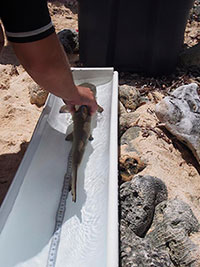
If this study was extended across to other islands it would help improve the knowledge about the behavior of the adults of this species, as almost nothing is known at this time. After this first study on our island, Océane Beaufort noted that the lemon shark population in Saint- Martin is higher than in Petite-Terre, in Guadeloupe, and the same goes for certain other species as well, such as reef sharks and nurse sharks.
As the representative of AGOA Sanctuary in Saint-Martin, the Reserve has an especially soft spot for marine mammals, and conducts annual scientific monitoring programs each year. Since 2003, the Reserve has managed to put together a large portfolio of photographs taken on their field trips out at sea. In amongst these photos are some valuable shots of humpback whales’ dorsal and caudal (tail) fins, which can be used as accurate identification cards for each animal. The idea is to be able to identify an animal visually as it’s moving around, without having to disturb it. Similar catalogues exist elsewhere and have enabled scientists to recognize, by comparing two identical photos, that a specific whale observed in Cape Verde was then seen in Guadeloupe, for example. To improve their knowledge on marine mammals, the Reserve is currently working on a catalog of identification photos taken around Saint-Martin and Sint Maarten. 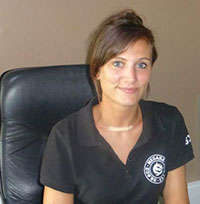 Marion Barrau, a fourth year student from the veterinary university of UAX, in Madrid, spent her summer preparing this catalog that today identifies 35 humpback whales, as well as 25 bottlenose dolphins. These photos were taken by the Reserve team and also by several eco-volunteers and other marine mammal enthusiasts. Marion invites all whale and dolphin lovers to send their photos of caudal or dorsal fins by email to: baleine@rnsm.org. Please note that these photographs will remain the property of the photographer, whose name will appear on each photo used. The Saint-Martin/Sint Maarten catalog will grow over time and become a valuable database that will allow us to track their migration routes, and also teach us more about their abundance and be able to estimate their population. When completed, this catalog should be available online and will allow everyone to participate in the identification of individuals out in the field, to share lucky encounters and to add new photos that will further enrich this database. The Reserve is working in partnership with the Observatoire des mammifères marins de l’arc guadeloupéen (OMMAG) on this project, who have a thick catalog of photos that is available for viewing on ommag.info. A big thank you to OMMAG for their technical support and their passion to communicate!!
Marion Barrau, a fourth year student from the veterinary university of UAX, in Madrid, spent her summer preparing this catalog that today identifies 35 humpback whales, as well as 25 bottlenose dolphins. These photos were taken by the Reserve team and also by several eco-volunteers and other marine mammal enthusiasts. Marion invites all whale and dolphin lovers to send their photos of caudal or dorsal fins by email to: baleine@rnsm.org. Please note that these photographs will remain the property of the photographer, whose name will appear on each photo used. The Saint-Martin/Sint Maarten catalog will grow over time and become a valuable database that will allow us to track their migration routes, and also teach us more about their abundance and be able to estimate their population. When completed, this catalog should be available online and will allow everyone to participate in the identification of individuals out in the field, to share lucky encounters and to add new photos that will further enrich this database. The Reserve is working in partnership with the Observatoire des mammifères marins de l’arc guadeloupéen (OMMAG) on this project, who have a thick catalog of photos that is available for viewing on ommag.info. A big thank you to OMMAG for their technical support and their passion to communicate!!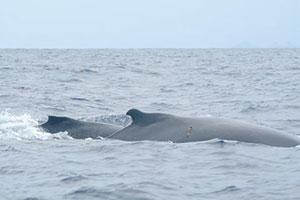
Following Guadeloupe and Martinique, the 2014 Agoa campaign took place in the Îles du Nord. The scientific monitoring of marine mammals in the dry season was successfully carried out from April 15th to 28th. Numerous marine mammals were observed between Saint-Martin, Sint Maarten, Anguilla, St. Barts, Saba and St. Eustatius, including humpback whales, pantropical spotted dolphins and bottlenose dolphins. The Nature Reserve was involved in the program, as usual, along with eco-volunteers from Saint- Martin and Guadeloupe, and Amandine Eynaudi, a manager from Agoa based in Guadeloupe, CAR-SPAW, Anguilla and Saba.
The mission of tagging humpback whales in the Northern Islands was completed on April 13th, but the work has really only just begun. Of the 8 transmitters implanted, most of them emitted a signal for several days, and 3 are still emitting signals today. This is deemed a success considering the active behavior of these species during mating season. The first tag has been emitting a signal for the last 25 days and the movements of this whale with its calf, baptized “Soca and Joy” by the children of Saint-Martin, as well as other tagged whales have already improved the knowledge of the species behavior during this season. Amongst the important results already noted, the notion that each island “possesses” a specific group of whales has been called into question. The movement of the 8 tagged whales from island to island showed that certain whales had already travelled more than 1,700km passing through the U.S. Virgin Islands and the Silver Bank, whereas others come and go between Saint Martin, Saint Barths, Saba, Sint Eustatius, Barbuda and Saint Kitts… It also confirmed that the humpback whales are not simply “passing through” the Northern Islands, as indicated by the males’ songs, the presence of females and their newly born calves seen at a few days interval, and the groups of males pursuing the females. This behaviour shows us that today we are truly within an active reproduction zone that is of course trans-boundary. 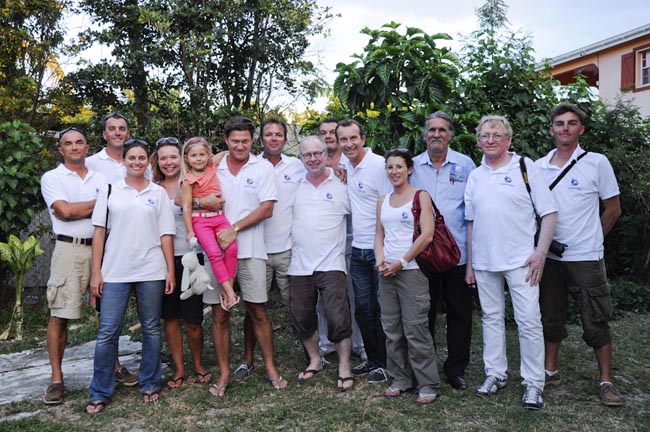 The results of this mission are more than promising if the 12 biopsies and 12 photographs of the caudal fin, that will be analyzed and compared with the existing databases, are also added to them. It is therefore essential to implement a strategy of regional cooperation to strengthen conservation efforts in this breeding zone. In the near future the waters of Dutch islands, Sint Eustatius and Saba, will also become part of a sanctuary in order to better protect the marine mammals, notably the humpback whales. It is desirable to strengthen ties with the island of Anguilla with regards to the relationship between Saint Martin and Anguilla. Ultimately, the pairing of the future sanctuary of the Dutch islands and the waters of Anguilla, would bring about a joint strategy for conservation and scientific missions throughout the breeding grounds of the humpback whales in the Northern Islands of the Lesser Antilles. Apart from the scientific aspect, this mission has also brought all the managers of the protected marine areas in the Northern Islands together, and involved specialists from Mayotte, Denmark, Guyana, the United States and the Netherlands. Nicolas Maslach, Director of the Saint Martin Nature Reserve, holder and founder of this project, thanks all technical and financial partners : CAR-SPAW, the Environmental Agency of Saint Barths, the Anguillan authorities, the Sint Maarten Marine Park, the Dutch authorities of Saba and Sint Eustatius. Without them, this mission would never have been realized. He also thanks the association “Mon Ecole, ma baleine” for the quality of their work carried out in several schools in Saint Martin. Building on the success of this mission, Nicolas Maslach is already organizing the MEGARA mission 2015.
The results of this mission are more than promising if the 12 biopsies and 12 photographs of the caudal fin, that will be analyzed and compared with the existing databases, are also added to them. It is therefore essential to implement a strategy of regional cooperation to strengthen conservation efforts in this breeding zone. In the near future the waters of Dutch islands, Sint Eustatius and Saba, will also become part of a sanctuary in order to better protect the marine mammals, notably the humpback whales. It is desirable to strengthen ties with the island of Anguilla with regards to the relationship between Saint Martin and Anguilla. Ultimately, the pairing of the future sanctuary of the Dutch islands and the waters of Anguilla, would bring about a joint strategy for conservation and scientific missions throughout the breeding grounds of the humpback whales in the Northern Islands of the Lesser Antilles. Apart from the scientific aspect, this mission has also brought all the managers of the protected marine areas in the Northern Islands together, and involved specialists from Mayotte, Denmark, Guyana, the United States and the Netherlands. Nicolas Maslach, Director of the Saint Martin Nature Reserve, holder and founder of this project, thanks all technical and financial partners : CAR-SPAW, the Environmental Agency of Saint Barths, the Anguillan authorities, the Sint Maarten Marine Park, the Dutch authorities of Saba and Sint Eustatius. Without them, this mission would never have been realized. He also thanks the association “Mon Ecole, ma baleine” for the quality of their work carried out in several schools in Saint Martin. Building on the success of this mission, Nicolas Maslach is already organizing the MEGARA mission 2015.
It is now possible to follow the movements of these whales on the Facebook page of Saint Martin Nature Reserve, or on their site www.seaturtle.org/ tracking/index.shtml?project_id=979.
On March 26th the Reserve invited the public to discover the Megara project at the Sandy Ground Cinema where they aired a thirty minute film, that had been filmed in Mayotte in 2013. The event was organized with the help of the Rotary Club that was in charge of the communication side and sale of tickets, to which over a hundred people responded.
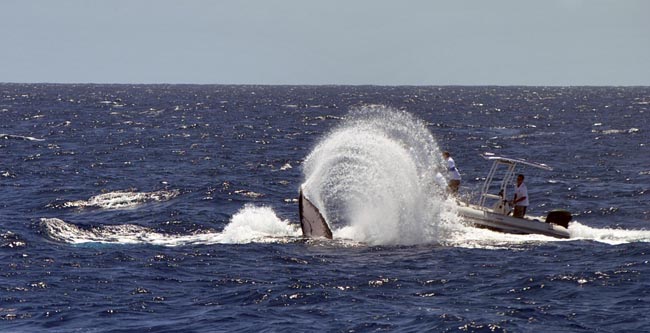
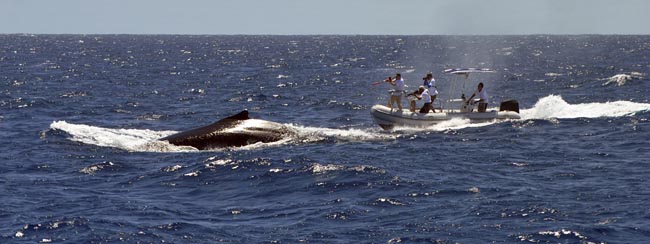
Having already attended the 2013 campaign of scientific monitoring of marine mammals in the wet season in Martinique from October 1st to 8th, the Saint Martin Nature Reserve participated in an identical program, but this time in the dry season, from March 12th to 19th, 2014 in Martinique, and then from April 15th to 28th in the Northern Islands. These missions, organized by the Protected Marine Areas Agency (AAMP) and CAR-SPAW, within the Agoa Sanctuary over both periods, permitted the observation of different species. Of course, some species, including the humpback whales, leave the warm waters of the Caribbean Sea in the spring. Romain Renoux, in charge of managing of the Agoa Sanctuary in Saint-Martin, as well as other participants who came from Guadeloupe, Martinique and Quebec, observed several rare species in the canal between Martinique and Dominica : the Peponcephala (Melonheaded whale) or Electra Dolphin, the Pseudorca (False Killer Whale), as well as a group of Mesaplondts (Beaked Whales).
The objective of these missions is threefold :
- To better understand the species present in the Agoa Sanctuary and to complete the inventory of species encountered.
- Identify areas frequented by the different species.
- Identify human activities likely to have an effect on these marine mammals in the sanctuary (passage of large vessels, pollution, fishing…) and to implement management actions in their favor.
Eva Moisan, a Professional Masters student at the corsican University of Corte, is studying “Integrated Coastal Management and Ecosystems”. Working as an intern at the Reserve from February 24th to August 8th, with the support of Julien Chalifour, Head of the Scientific Division, she has devoted herself to the study of Halophilia Stipulacea, an invasive species introduced through boat anchors that can slowly overtake native sea grass. The student has to find the answers to a series of questions. Where are the species present? Are they progressing? Are they digressing? Will they stabilize? What is their relationship with the local fauna and flora? Will they seek to replace the native sea grass composed of Syringdium and Thalassia, or are they going to colonize space left vacant by the other two species? How are fish, shellfish and crustaceans reacting to these new algae that are much shorter cropped than the two species to which they are accustomed? Are they going to feed on them? Patience. Most of the answers to these questions will be published in the Reserve’s next newsletter. In the meantime, we wish Eva the best of luck in her research.
On November 15th at the Mercure Hotel, Romain Renoux, in charge of the AGOA Sanctuary in Saint-Martin, presented the results of the marine mammal monitoring programs, initiated by Nicolas Maslach within the Sanctuary and carried out in the Îles du Nord over 2012 and 2013. Over the 3 seasons, 1,022km of transects were completed around Saint-Martin and Saint Barthelemy, and 1,400km around Anguilla, Saint Eustatius and Saba. 68 visual observations were reported. 6 different species were seen : the humpback whale, sperm whale, atlantic spotted dolphin, pantropical spotted dolphin, bottlenose dolphin and the very rare pygmy sperm whale. The presence of short-finned pilot whales was acoustically confirmed. The significant presence of sperm whales calls for additional scientific research in order to increase our knowledge about their backgrounds and their activities. The presence of Bryde’s whales and killer whales remains to be confirmed. These scientific missions confirm the faunal richness of our waters which endows us with the important responsibility of protecting these species.
Despite the bad weather conditions between December 10th and 15th 2013, the last marine mammal scientific monitoring program organized by the AGOA sanctuary resulted in the observation of coastal bottlenose dolphins on Saba bank, two groups of about thirty Atlantic spotted dolphins, many of them juveniles, northwest of Anguilla and southwest of Saint-Martin, and even a whale shark, completely harmless, south of Saint-Martin. Several acoustic observations of sperm whales and humpback whales were recorded using a hydrophone and are currently being processed, as well as a large number of photographs. The aim is to pick out identity connections between the marine mammals of the Îles du Nord and those seen in Guadeloupe and Martinique. The Marine Protected Area Agency in collaboration with CAR-SPAW charted two catamarans for this mission, the first covered the waters of Saint-Martin, Saint-Bart and Anguilla, and the second was used in the Saba, Saint Eustatius and Sint Maarten zone. The managers of the marine protected areas of these islands participated in the monitoring, as well as representatives of CAR-SPAW and two eco-volunteers from Saint- Martin, that the Reserve thanks for their involvement. This annual mission programmed in the wet season, was the second one in 2013, the first one took place in spring, the dry season. One of the goals of the sanctuary is to improve knowledge on marine mammals in order to strengthen their protection. Six objectives were followed : assessment of the diversity of species, assessment of the abundance of marine mammals, their geographical breakdown and eventual identification of their migration routes, the description of ecological parameters (water depth, distance from the coast…), the development of cooperation between the islands and finally to build the knowledge of the managers.
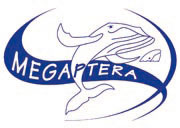 What migratory routes do the humpback whales take? Which waters do they frequent exactly? Do they cross paths with other humpback whales? As stated in the Management Plan, the Nature Reserve, that represents the AGOA Sanctuary in Saint-Martin, is anxious to provide answers to these questions in order to improve the management of the sanctuary. In collaboration with CAR-SPAW and the Saint-Bart Nature Reserve, a 10 day scientific mission baptized “Megara” has been programmed for the end of March 2014 in the waters of Saint-Martin and Nevis. The idea, a first in the Îles du Nord, is to implant Argos marine transmitters into the fatty tissue of several humpback whales in order to follow their journey via satellite and the web. The association Megatera, accustomed to this type of exercise, will be aboard the catamaran chartered for this mission, along with Michel Vély, chairman of Megaptera, several scientists and managers of marine protected areas in the region. The mission also plans to take skin samples of the humpback whales, and sperm whales as well. These samples will determine the sex and origin of each individual. They will be compared by Dr. Per J. Palsboll at the Dutch university of Groningen that has a database of over 8,500 samples collected from animals in the Northern Atlantic. An awareness campaign for scholars is programmed in partnership with Jean- Marie Jespère, the Academy Inspector of National Education in Saint-Martin, and the association «Mon école, ma baleine», Nelly Pélisson.
What migratory routes do the humpback whales take? Which waters do they frequent exactly? Do they cross paths with other humpback whales? As stated in the Management Plan, the Nature Reserve, that represents the AGOA Sanctuary in Saint-Martin, is anxious to provide answers to these questions in order to improve the management of the sanctuary. In collaboration with CAR-SPAW and the Saint-Bart Nature Reserve, a 10 day scientific mission baptized “Megara” has been programmed for the end of March 2014 in the waters of Saint-Martin and Nevis. The idea, a first in the Îles du Nord, is to implant Argos marine transmitters into the fatty tissue of several humpback whales in order to follow their journey via satellite and the web. The association Megatera, accustomed to this type of exercise, will be aboard the catamaran chartered for this mission, along with Michel Vély, chairman of Megaptera, several scientists and managers of marine protected areas in the region. The mission also plans to take skin samples of the humpback whales, and sperm whales as well. These samples will determine the sex and origin of each individual. They will be compared by Dr. Per J. Palsboll at the Dutch university of Groningen that has a database of over 8,500 samples collected from animals in the Northern Atlantic. An awareness campaign for scholars is programmed in partnership with Jean- Marie Jespère, the Academy Inspector of National Education in Saint-Martin, and the association «Mon école, ma baleine», Nelly Pélisson.
Scientists from around the world - Brazil, India, United Kingdom, United States…- met at Anses d’Arlet in Martinique, from December 1st to 8th, with the objective of exchanging and enriching their knowledge about sponges in the Caribbean. The sponge is an aquatic animal and there are roughly 5,000 known species in the world. Julien Chalifour attended the interventions given by the experts and participated in the dives to collect samples for processing. This workshop enabled the Head of the Scientific Division to collect samples in the Saint- Martin Nature Reserve and then have them sent off to the specialists. The results will further enrich the inventory which presently lists 818 species that were recorded after the scientific research program carried out in 2012 in the Reserve waters. 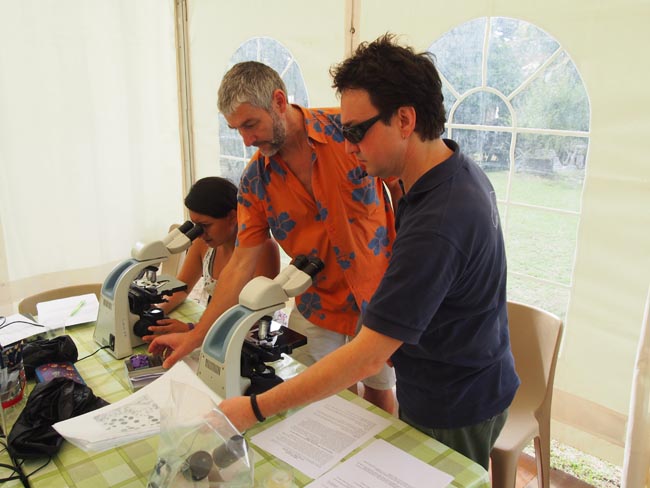
In early December, Nicolas Maslach gave the go ahead to the Australian mission, Catlin Seaview Survey, and very soon we will be able to watch detailed films on the internet of the reefs at Tintamarre and Grandes Cayes. The project was conducted by a team of Australian scientists with three cameras taking 360° photos at high resolution. Developed by the Australian researchers, this technique helps to improve seabed monitoring, as well as cartography. Falling within the framework of the battle against the degradation of coral, the objective of Catlin is to monitor the condition of the coral reefs as closely as possible and to provide the specialists with the most accurate information possible. This international mission began in the Pacific and is now in the Caribbean. The videos will be available soon on www.globalreefrecord.org
Spotted on Tintamare in March 2013 during the rodent eradication on the island, the skink is a small and very rare lizard, endemic to the islands of Désirade and Petite Terre and thought to have disappeared from Saint-Martin. Photographs taken prove its existence in the dry stonewalls on Tintamare, and this discovery could become one of the major areas of focus in the Reserve’s next Management Plan. A scientific monitoring program will be financed by the State through DEAL Guadeloupe and conducted by the association AEVA, specialist of this reptile, in collaboration with the Reserve. The aim will be to assess the population of these small lizards and define their location. It will be necessary to capture roughly a dozen in order to come out with 5 skink DNA samples. Unfortunately, one individual will be sacrificed, but for a good cause as it will be sent to the Museum of Natural History.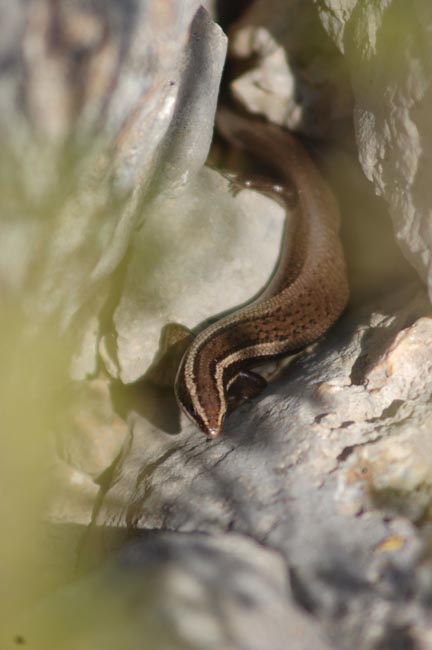
A new species is slowly invading the sea grass beds and the Reserve is concerned about the consequences of this silent invasion. Introduced via boat anchors, Halophilia stipulacea, is pushing its way in over Syringodium and Thalassia. In Guadeloupe and the Saintes, this new species has taken over almost completely, but this invasion is not necessarily negative. Halophilia stipulacea is apparently very popular with the fish that digest it easily and it could also stabilize sediment. A research mission has been launched, and will be conducted over six months by an intern doing his 2nd year Masters at the University of Corte, in Corsica. Starting from the end of February, the student will work on mapping out the relevant sites and defining the extent of the phenomenon. He will endeavor to come up with monitoring methods to find out if Halophilia spreads or regresses, and which animals consume it.
Marine animal larvae are easy prey for predators and increasing their survival rate is a good way to increase ecological heritage. With this goal in mind, the Reserve is going to install an artificial reef in a reef free zone. Consisting of breeze blocks, covered in tiny crevices that are ideal for the installation of larvae, this reef will become a chosen habitat for thousands of future fish and shellfish that will be able to survive. The mission, financed by Te- MeUm, will be handed over to an intern doing his 2nd year Masters at the University of La Rochelle, from mid-April until mid-June 2014.
En avril 2012, une mission scientifique annonçait avoir identifié plus de 700 espèces marines dans les eaux de la Réserve, mais ce sont finalement 818 espèces très exactement qui ont pu être décrites à l’issue de cette mission, dont certaines étaient inconnues jusque-là! Jean-Philippe Maréchal, l’un des sept scientifiques de cette mission financée par l’État, a restitué tous les résultats à l’occasion du comité consultatif. Il s’avère que la baie de l’Embouchure – dite baie du Galion – constitue le site possédant la biodiversité la plus importante. Très fréquenté, ce site représente un enjeu majeur pour la Réserve, qui se doit d’y accueillir le public tout en veillant au respect de la protection des espèces. Devant l’ampleur de ces résultats, le comité a demandé à la Réserve d’assurer leur diffusion auprès des gestionnaires d’espaces protégés dans toute la Caraïbe, afin de mettre en avant l’extraordinaire biodiversité de Saint- Martin à l’échelle régionale et les surprises que peut réserver une mission scientifique bien menée. Il a également été décidé que la Réserve devait poursuivre sa stratégie d’inventaire de la faune et de la flore, la mission d’avril 2012 concernant uniquement trois embranchements : les crustacés (crevettes, crabes...), les mollusques (limaces, coquillages...) et les échinodermes (oursins, étoiles de mer, ophiures...).
From March 5th to 11th, the Nature Reserve was on the water participating in the third mission of marine mammal monitoring organized by the AGOA sanctuary. Two catamarans hosted teams from Saint-Martin, St. Barts, Anguilla, Saba and St. Eustatius, as well as two experts in marine mammals, one from the US and the other from Canada, stationed on the island of Dominica. The idea of this monitoring is to determine the distribution and abundance of marine mammals in the waters of the Îles du Nord and from the Saba plateau; and the ideal weather conditions resulted in numerous observations. The presence of sperm whales was confirmed, both in the rainy and dry season, many humpback whales were also identified, as well as several dolphin species. These shared missions with other managers of marine protected areas help to strengthen regional cooperation and promote fruitful discussions about each manager’s management practices. Having been a partner since the very beginning, the Saint-Martin Nature Reserve is now positioned as the key referent of the AGOA program in the Îles du Nord in terms of expertise and know-how.
The second marine mammals research survey
Le rapport annuel est en cours de préparation.
The Agoa sanctuary for the protection and conservation of marine mammals in the waters of the French West Indies conducted its second scientific survey of these mammals, however, this time in the wet season, from October 2nd to 7th, 2012.
In this season, the Humpback whales have migrated to the cooler waters of the North Atlantic for the summer.
For the Northern Islands, two catamarans were used by observers from the Nature Reserves of Saint-Martin and Saint-Barths; from the Marine Parks of Sint Maarten, Saba and St. Eustatius; from the Marine Protected Areas Agency; from Breach and CAR-SPAW, as well as a team of Dutch researchers. Not surprisingly, there were fewer observations than in March 2012 in the same areas.
One of the boats covered the waters between Saint-Martin, St. Barths and Anguilla, and the other was devoted to the area between St. Eustatius, St. Kitts, Saba and the Saba Bank.
The annual report is being prepared.

The end of December 2012, was report writing time for Julien Chalifour, who is in charge of the local branch of the sea turtle network.
Figures:
529 patrols took place on ten designated beaches and
185 tracks of turtles crawling up onto the beaches were identified by the fifty eco-volunteers,
of which 107 were fresh tracks.
58% Of these tracks resulted in the laying of eggs, mainly by Green turtles and especially on the beaches of Baie Longue and Baie aux Prune.
These figures, which are significantly higher than those of 2011, could perhaps be explained by the fact that the turtles were observed in a completely empirical way and it has been deduced that the nesting cycle of Green turtles normally experiences a peak every two years.
These Green turtles managed to lay eggs on 65% of their ascents up the beach, whilst the Hawksbill turtles only managed to lay on 55% of their exits from the water.
This difference could be due to the specificities of the two species;
Green turtles do not mount as high up onto the beach as the Hawksbill and therefore come across fewer obstacles before they dig their nests.
The Reserve notes, however, a slight decline in the Green turtles nesting and raises again the issue of beaches lit at night and loud music, which frighten these creatures away.
A turtle knocking at the gate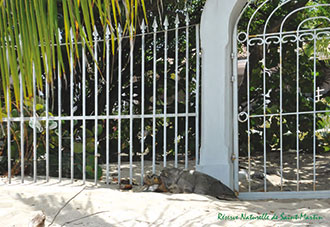
On september 4th, 2012 at 11 o’clock in the morning, a couple of bathers called the Reserve to report that a hawksbill turtle was trying to dig her nest, but kept coming up against the fence and the gate of a villa that had been built very close to the sea. Julien chalifour arrived on the scene and found that this was indeed the case; the poor animal was turning around and around in circles and then in vain it finally returned to the sea after an hour and a half of fruitless efforts.
The next day, some distance from the villa, an eco-volunteer discovered nesting tracks and a nest, we hope that they belonged to the same turtle.
The Reserve took the opportunity to thank all eco-volunteers and all walkers who call-in to report the presence of turtles. the 2013 campaign will begin soon. an information session will be held for eco-volunteers in february.
The beginning of the year, for Julien Chalifour, in charge of the Scientific Department at the Nature Reserve, signals the time to take stock of the monitoring that has been carried out on shorebirds – dependent on the salt ponds - and seabirds.
THE SHOREBIRDS
The same protocol was followed throughout the year, a monthly visit was taken to the ten salt ponds on the island.
Sixty species of shorebirds have been observed (with binoculars) and counted, as well as some seabird species, like the Pelican, who also frequent the ponds.
These observations are intended to note the monthly fluctuations of the attendance of the birds depending on the species. In 2012, six species were monitored particularly closely, either because they are part of the island’s heritage - protected, threatened or rare - or because they nest here in Saint-Martin.
These being the Purple Heron, the Black-necked Stilt from America, the Caribbean Coot, the Great Egret, the Little Tern and the White-cheeked Pintail (the Bahama Duck). A scientific report is currently being drafted.
THE SEABIRDS
The main target species were Tropicbirds, Brown Noddys and Little Terns.
Disappointment concerning the Tropicbirds: only ten individuals were observed on average during the nesting period on Tintamare, which is the only time these beautiful birds do not live on the high seas.
It is a significant regression from 2010, although it remains to be confirmed if the change in protocol was not the cause of this decline.
This having been said, it is without a doubt that the prohibition to anchor off North Cove on Tintamare is justified more than ever in order to respect the tranquility of birds.
Remaining on Tintamare: the numbers of Brown Noddys, on the other hand, proved stable.
Thirtyeight individuals on average were present at each count and thirty-seven nests were reported, of which three-quarters held chicks, who have since taken flight to other places.
In 2012 the Little Terns were monitored mainly from May to September.
They like to frequent the Great Pond in Terres Basses (which falls outside of the Reserve) where a dozen birds were recorded at each counting. Twenty individuals were observed overall in all the salt ponds, but the species also frequents rocky outcrops that lie outside the territory of the Reserve.
The Little Tern nests on sandbars and unfortunately no nests were spotted - and no chicks - probably because of the significant changes in the water levels of the salt ponds.
The study of sea turtles laying eggs on the island’s beaches continues. The good news is that the numbers, while down in May at the beginning of the season, have shown a serious increase. The Réserve’s 60 eco-volunteers remained vigilant and noted 425 sorties and 86 instances of turtle tracks, primarily green sea turtles. In addition, several people have called the Réserve to announce the presence of baby turtles just after their appearance on the beaches of Orient Bay, Friar's Bay and Long Bay, right in front of La Samanna hotel. The baby turtles usually emerge at night and it is rare to be able to observe them as it happens.
Emergence of sea turtles: encouraging results
If you witness the emergence of turtles or are in the presence of a baby turtle on the beach, what should you do?
First, make sure that no one interferes and that no potential predators get near the young reptiles.
Keep dogs and birds out of the way, do not touch the baby turtles, and let them make their way into the sea by themselves.
Please call the Réserve Naturelle if any of the babies seem to be in danger of any sort (05 90 29 09 72). Your eyewitness reports are very valuable to us.
Every summer for the past six years, divers from the nature reserves in Saint Martin, Saint Barth, and Petite Terre in Guadeloupe were able to head into the sea to evaluate the condition of the coral reefs and sea plant beds in these three different areas, thanks to financing from DEAL in Guadeloupe. This year, the experience was repeated.
In Saint Martin, from August 30-September 9, the divers added two new monitoring stations, so that there are now four sites within the perimeter of the Réserve and two sites outside of the perimeter, the goal being to observe the overall conditions in these zones.
Taking into account the degradation in the quality of the swimming water around Pinel, special attention was paid to the reefs and plant beds this year.
The coral on one hand, and the plant beds on the other, were subject to a kind of census, with the numbers compared to those of past years.
The data is currently under evaluation and the results will be known before the end of the year.
At the time when the Réserve Naturelle de Saint-Martin was created, a total of 480 different species of flora and fauna were estimated to exist in the various zones on land and at sea.
But that was before a recent scientific mission listed more than 700 marine species.
This inventory of fauna, which is part of the Réserve’s management program, took place from April 9-28, 2012.
It was commissioned by the Réserve, financed by the DEAL, and orchestrated by The Marine Environment Observatory of Martinique, with the support of seven university professors, comprising four from the University of Florida and the other three from Brazil, Martinique, and the American Virgin Islands.
The three classifications included in this study are crustaceans (shrimp, crabs...), mollusks (slugs, shellfish...), and echinoderms (sea urchins, starfish, ophiuroids...).
As part of this project, the scientific researchers did dives to take samples of the underwater milieu—sand, mud, rock, grasses, coral reefs—during the day as well as at night, in order not to miss nocturnal species.
They sometimes used an underwater vacuum or a brush to capture the smallest species (less than 1 centimeter). The first samples were inspected at a portable laboratory set up in their rental villa, including scrutiny under a microscope.
Certain samples are still under observation, others surprisingly colorful and graceful, but the final results won’t be available until September 2012.
And maybe we will discover a species unknown until now… the objective is to create a catalogue combining photos of all the species that were observed, both male and female.
And yet, in addition to this important work, there are many samples and animals to observe, on other sites, at other moments, at other depths, without even mentioning the parasites that depend on their hosts.
This study confirms the importance of the natural marine resources in the Réserve.
Underwater sea grass beds, these ordinary marine zones of no particular interest to amateur divers, provide a nursery for numerous species, and offer them protection and food. From mangroves to coral reefs, they represent a fragile, endangered ecosystem that plays a determining role in the purification of coastal waters. The state of their health is as important as that of coral for a project referred to as IFRECOR (French Initiative For Coral Reefs), which has established an observatory for overseas sea grass beds. Their goal is to report on the condition of marine plants and combine all possible information in order to coordinate future activities and propose a robust, user-friendly methodology to follow the development of the sea grass in these zones, that have not yet been studied. With this in mind, Christian Hily, a researcher at the European Institute for Marine Studies in Brest, was sent to Saint Martin by IFRECOR from May 29-June 1, 2012. This scientist had visited the island in 2011 to do a report on the sea grass beds, based on scientific studies done by the Réserve since 2007. This time, his task was to test a new methodology using an underwater camera pulled by a boat. This system allows for the observation a larger perimeter around the sea grass beds to note their state of health, the species present in each area, their density, and the fauna that live there, as well as the quality of the sea grass between the shore and the reef. These observations will be compared to those done by the Réserve and increase the preciseness of available information.
Four species of marine plants in SXM
These sea grass beds consist of flowering marine sea grasses (phanerogams),of which four species coexistent in Saint Martin.
The two principal ones are Thalassia and Syringodium, while the other two are less prevalent.
One of these, Halophila Stipulacea, originally from the Indian Ocean, is invasive.
Its presence was suspected for the past two or three years and has now been confirmed, as the sea grasses are rapidly spreading.
The first nest of green sea turtle this year was noted on May 12 at Plum Bay.
The second was a hawksbill sea turtle nest recorded on May 29 on Tintamare.
By late June, the Réserve had counted nine nests on Tintamare, five at Plum Bay, one on Pinel, and one on the beach at Grandes Cayes.
A total of 57 eco-volunteers - that the Réserve thanks for their work (often thankless as the turtles are not always there, but always useful from a scientific point of view) - got up early in the morning to check out the eight beaches listed as egg-laying sites in order to look for turtle tracks.
The Réserve is also responsible for a ninth site, that of Tintamare.
This number of nests is rather low and indicates the amount of work that remains to be done (dealing with too much light on the beaches, parking of cars, too much noise, keeping the sites clean) in order to make sure that these sea turtles continue to lay their eggs in St Martin in the future.
In Guadeloupe, for example, there can be as many as five or six egg-laying sites every day on the beaches where the turtles are most frequently observed.
Remember that any sort of disturbance at nights during the egg-laying season (March-October) can cause these protected turtles to make a U-turn and not lay their eggs on our beaches, making these fragile species even more endangered than before
As of May 2, the Brown Noddy had returned to the cliffs of Tintamare’s North Cove, the sole site where these protected marine birds reproduce and nest in Saint Martin.
Except during this period, the Brown Noddy spends the majority of its life on the sea, throughout the Antilles archipelago.
Arriving all at the same time, 40 Noddies immediately started building nests in anticipation of laying eggs.
Julien Chalifour, scientific officer of the Réserve, visits the site once every week as part of a study of the Brown Noddy and its egg-laying habits.
He has counted as many as 70 individual birds, either flying or on land.
At least 20 nests have been identified with a small marker to verify if they are visited by the parents, and after hatching to observe the chicks.
The Noddy can be violent and destroy its nest if disturbed.
They can also join forces to attack anything that perturbs them. Thus, mooring and going ashore has been forbidden in the bay of North Cove.
Please respect this interdiction!
Camille Bouzon, who was introduced in the last edition of the Journal, is a master’s degree student in “tropical ecology and agro-systems engineering” at the UAG in Guadeloupe.
He left the Réserve Naturelle on June 15, 2012, after a six-month internship.
His work was summed up by a report that will make easier the implementation of studies of the marine bird populations and the ponds within the Réserve.
This report will facilitate the collection of data used to better evaluate the effectiveness of the Réserve’s practices and the protection of our 85 various species of birds.
As for the marine bird population, both small and large White-tailed Tropicbirds nest in crevices along Rocher Créole, Tintamare, and Caye Verte: 8 to 9 individual birds were seen on each outing and 36 nests have been counted at the three sites, representing a slight regression since 2009.
The interdiction to anchor in North Cove has proved very positive for the Brown Noddy that nests on Tintamare from March through May, and last season there were 69 different specimens observed and 30 nests.
The Little Tern, which nests in the sand, abandons its nest as soon as it is disturbed, perhaps by a dog, a pedestrian, or worse, a quad. Heavy rains that might flood their nests, or make it difficult to nest in the sandbanks, also endanger these birds. 15 of them could be spotted on each field trip to the Orient Salt Pond and a total of 47 nests were noted at the various sites.
The Roseate Stern was observed for the first time last year near Rocher Créole, Tintamarre, the Pointe du Bluff, and the Orient Salt Pond.
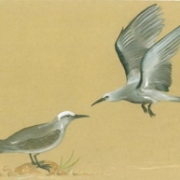 Noddi Brun - Marie Estelle Voisin
Noddi Brun - Marie Estelle Voisin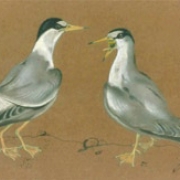 Petit Sterne - Marie Estelle Voisin
Petit Sterne - Marie Estelle Voisin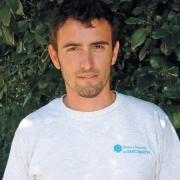 Camille Bouzon
Camille Bouzon Camille Bouzon, a 24 year-old masters degree student in “tropical ecology and agrosystems engineering” at the UAG in Guadeloupe, is doing an internship with the Réserve Naturelle from January 9 through June 15, 2012.
Originally from Marennes, this passionate ornithologist is learning about Saint Martin’s richness is this field.
Since his arrival, he has been studying the division of birds at the various sites and salt ponds, in order to create a zone chart that refines the ecology of these protected species and which can be used in the installation of improvements to the ponds, as spelled out in a study done about the ponds in 2010 and 2011.
He also did a study on the disturbance of birds at the Orient Salt Pond, where traces of all-terrain vehicles were found right to the water’s edge. As we have noted, these disturbances frighten the birds, which take flight, feed less, abandon their nests and ultimately desert the ecosystems that they depend on. In his study of marine and shore birds, Bouzon’s mission also includes improving the protocol for the study, as much as may be needed.
For example, he has proposed to regroup the same types of bids to optimize the counting procedures: the grouping of “Least Sandpipers” and “Semipalmated Sandpipers” into one group of “Small Sandpipers” would be useful in terms of the study and its statistics. Bouzon is also heading up a discussion related to ecotourism, as amateur ornithologists make up an important group of potential tourists.
Two zones of navigation were covered according to the established protocol: the first zone encircles Saba, Saint Eustatia and the Saba Bank; while the second is between Saint Martin, Anguilla, and Saint Barth. Funded by AGOA and the SPAW-CAR, this expedition was led scientifically by BREACH (association in charge of studying the marine mammal population in the AGOA sanctuary) in partnership with the Réserve Naturelle, which should over time become the local scientific reference.
Two boats were used for the staff from BREACH, AGOA, SPAW-CAR and the marine parks of Sint Maarten, Saint Eustatia and Saba, as well as the Réserve Naturelle of Saint Barth and the Réserve Naturelle of Saint Martin.
In 2010 and 2011, 11 visual observations and 16 acoustic observations were made along the 717 kilometers covered by the staff of the Réserve Naturelle, or an average of 1.6 humpback whales per 100 kilometers and relative abundance of 0.026 individual per kilometer.
The 2012 campaign is already more fruitful, based on the observation of several groups of sperm whales, dolphins, and humpback whales near our shores.
The increased number of sperm whale will be an important element in validating the importance of the Northern Islands in terms of the AGOA sanctuary, as these whales were pretty much considered absent in this zone.
Certain observations could even be made directly from the shore, as two adult and two baby humpback whales were seen late one afternoon near the entry to the marina at Oyster Pond.
This sanctuary is dedicated to the protection and conservation of marine mammals in the waters around the French West Indies, including Guadeloupe, Martinique, Saint Barthélemy, and Saint Martin.
The name AGOA is in reference to “Maï d’Agoa,” the mother of the spirit of the water in Amerindian mythology. The sanctuary covers 138,000 km2.
The sites were visited twice a week by the staff and the eco-volunteer partners of the Réserve, for a total of 310 visits.
The hawksbill turtles were more numerous in terms of laying their eggs on the beaches of Saint Martin, while the rarer leatherbacks left just one trace on the beach at Long Bay and a nest on the beach in Orient Bay without evidence of eggs as the turtle was most likely disturbed by light and people (see issue n°12 of this Journal, which you can download at www.reservenaturelle-saintmartin. com).
The sea turtles prefer the beaches at the lagoon on Tintamare, Coralita, and Long Bay.
Julien Chalifour, director of the scientific department for the Réserve, has noted an overall regression in the number of turtles seen since 2009, especially on the beaches of the Lowlands. However, the same generation of sea turtles only lays eggs every other year, so this trend could reverse itself this year. At the same time, the diving clubs in the INASCUBA network observed 222 sea turtles during 312 various dives on 30 different sites, with the height of the sightings in February 2011. As a matter of course, at the end of each dive, the clubs fill out a form indicating the number of sea turtles that were spotting, as well as their species.
The “Sec de Grand-Case” of the French side, Charlie Shoal and Proselyte Reef on the Dutch side, hold the record for the most sea turtles, yet even here their numbers are slightly lower.
There were also fewer dive clubs participating, as the follow-up takes a certain amount of time every day. As a result the Réserve is once again going to try and mobilize the professional divers.
Most of them were trained on March 5 in the monitoring protocol and thus can identify traces of turtles that come to nest on the beaches, and differentiate the species. A second session was organised in late March, just before the hieght of the egg-laying season in April.
En général, les touristes recherchent la nature la plus naturelle possible et je les informe qu’ils se rendent sur un territoire protégé lorsqu’ils vont à Tintamare ou à Pinel.
Ils savent qu’ils vont trouver une faune et une flore plus riches que partout ailleurs et ils ne reviennent jamais déçus ! ».
COOL.. and NOT COOL..
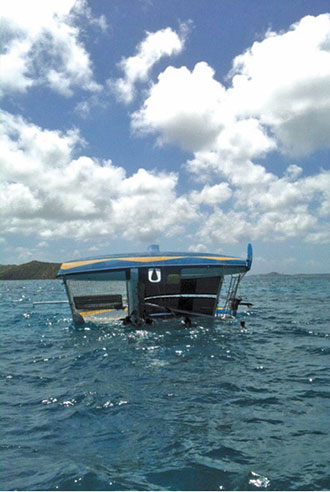
COOL
L’équipe de la Réserve était sur l’eau pour la Heineken Regatta et a aidé la SNSM à remettre d’aplomb ce catamaran retourné.
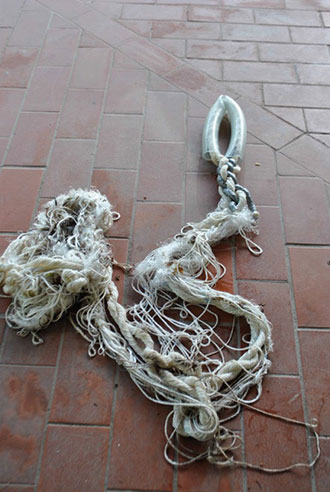
NOOT COOL
Plaisanciers, attention à la manoeuvre ! Respectez les mouillages mis en place pour vous par la Réserve naturelle.



